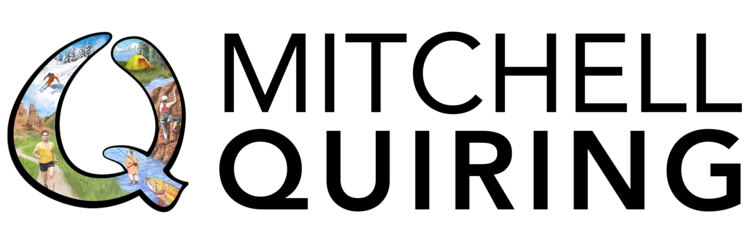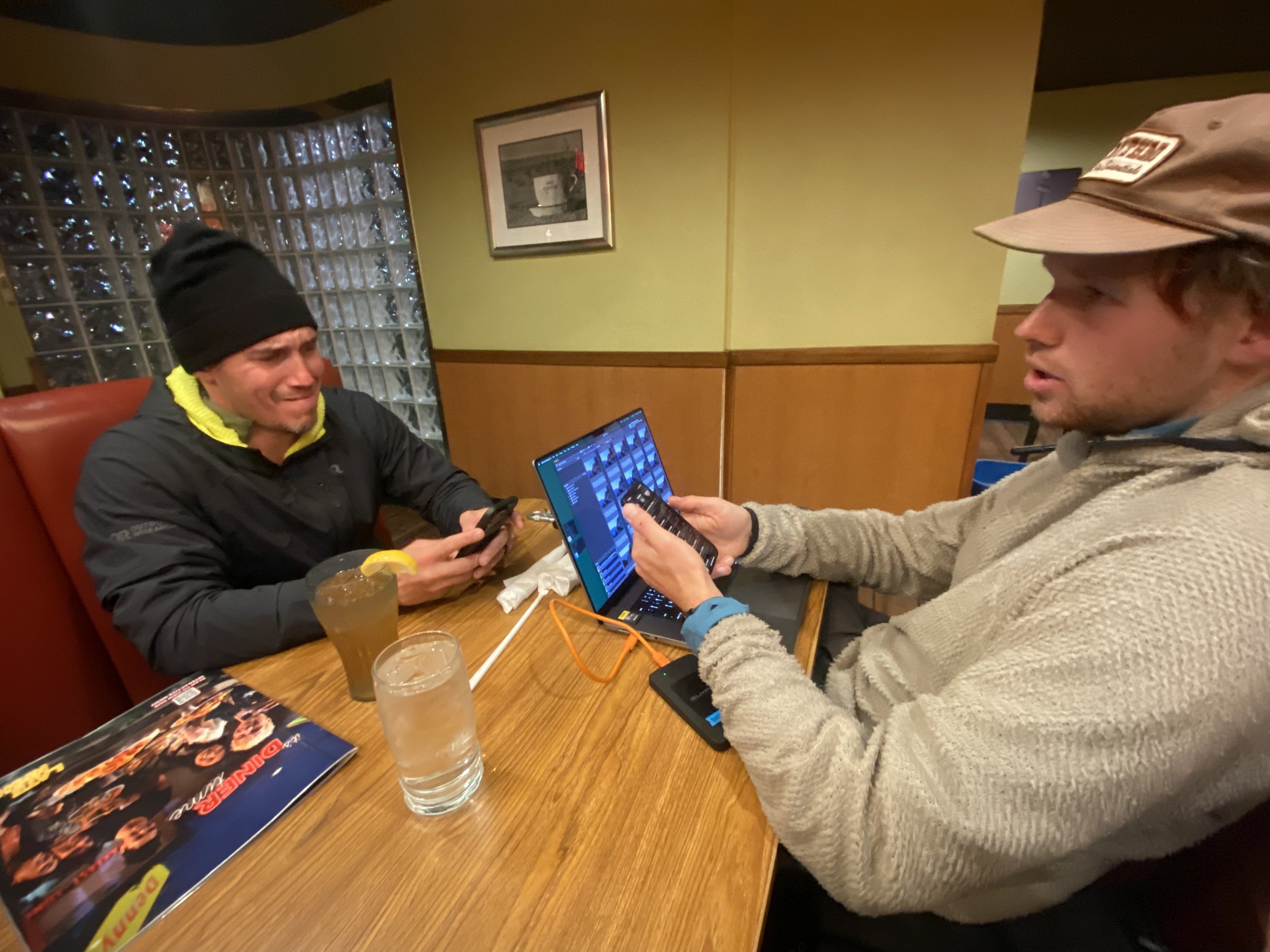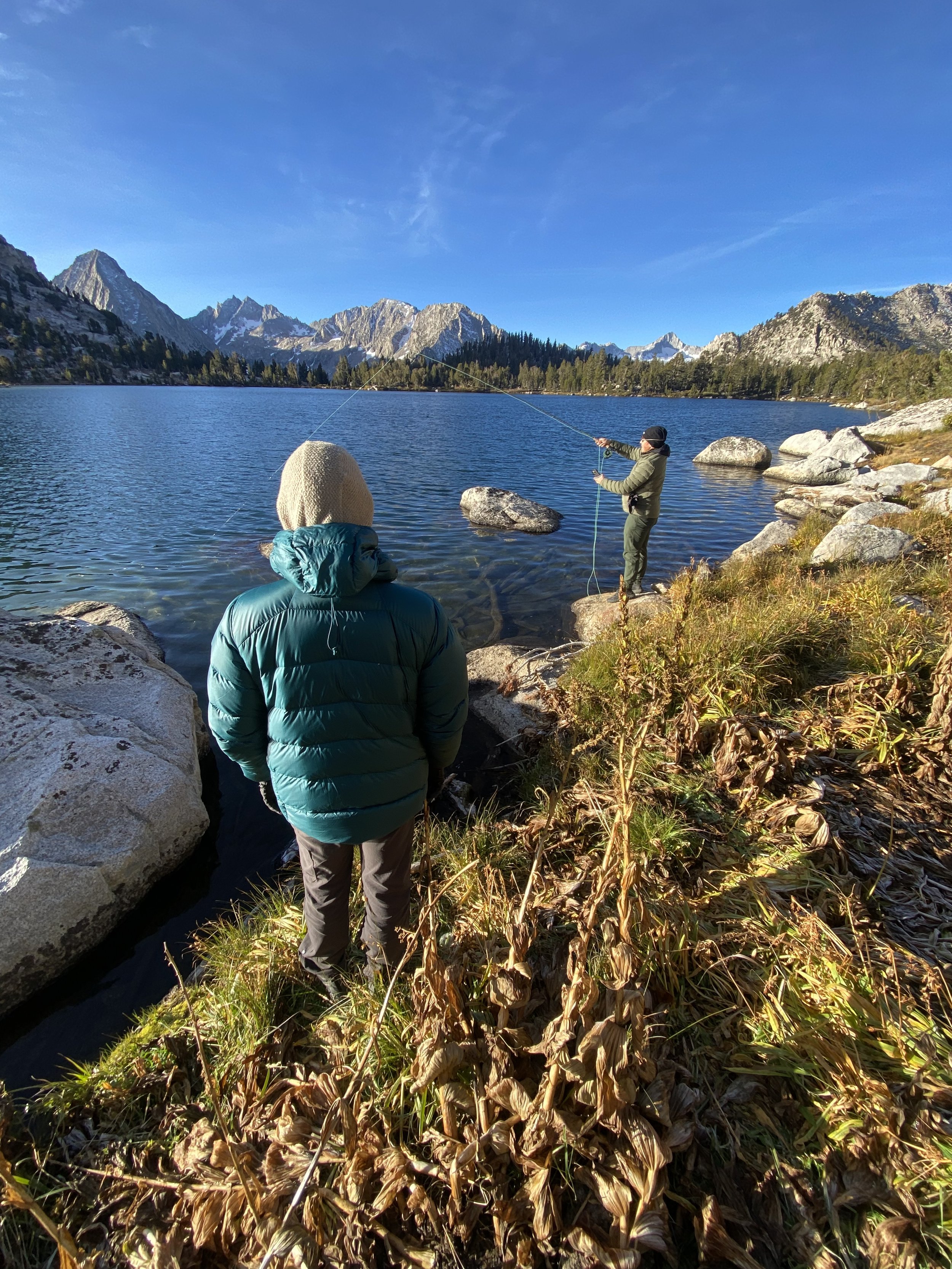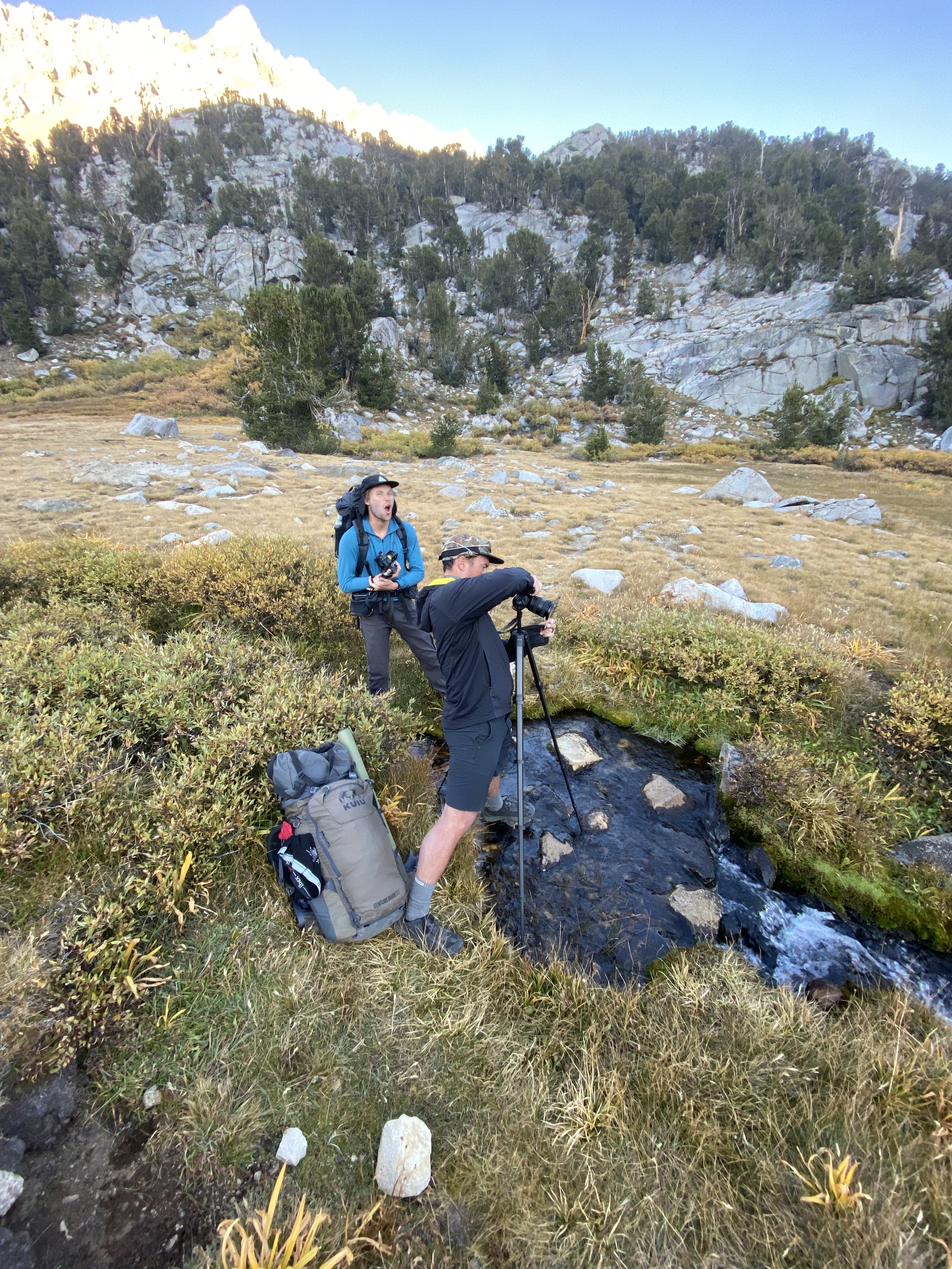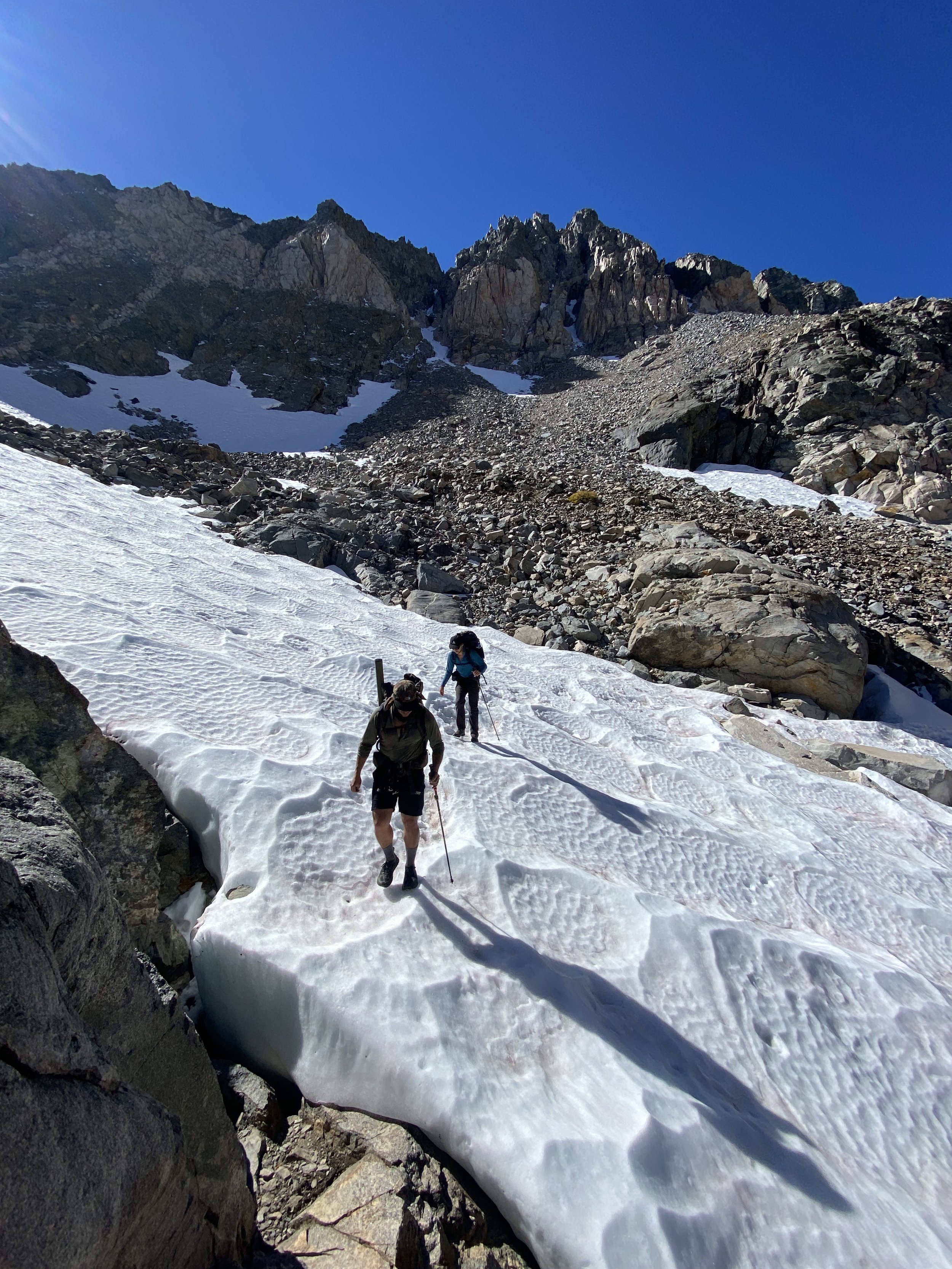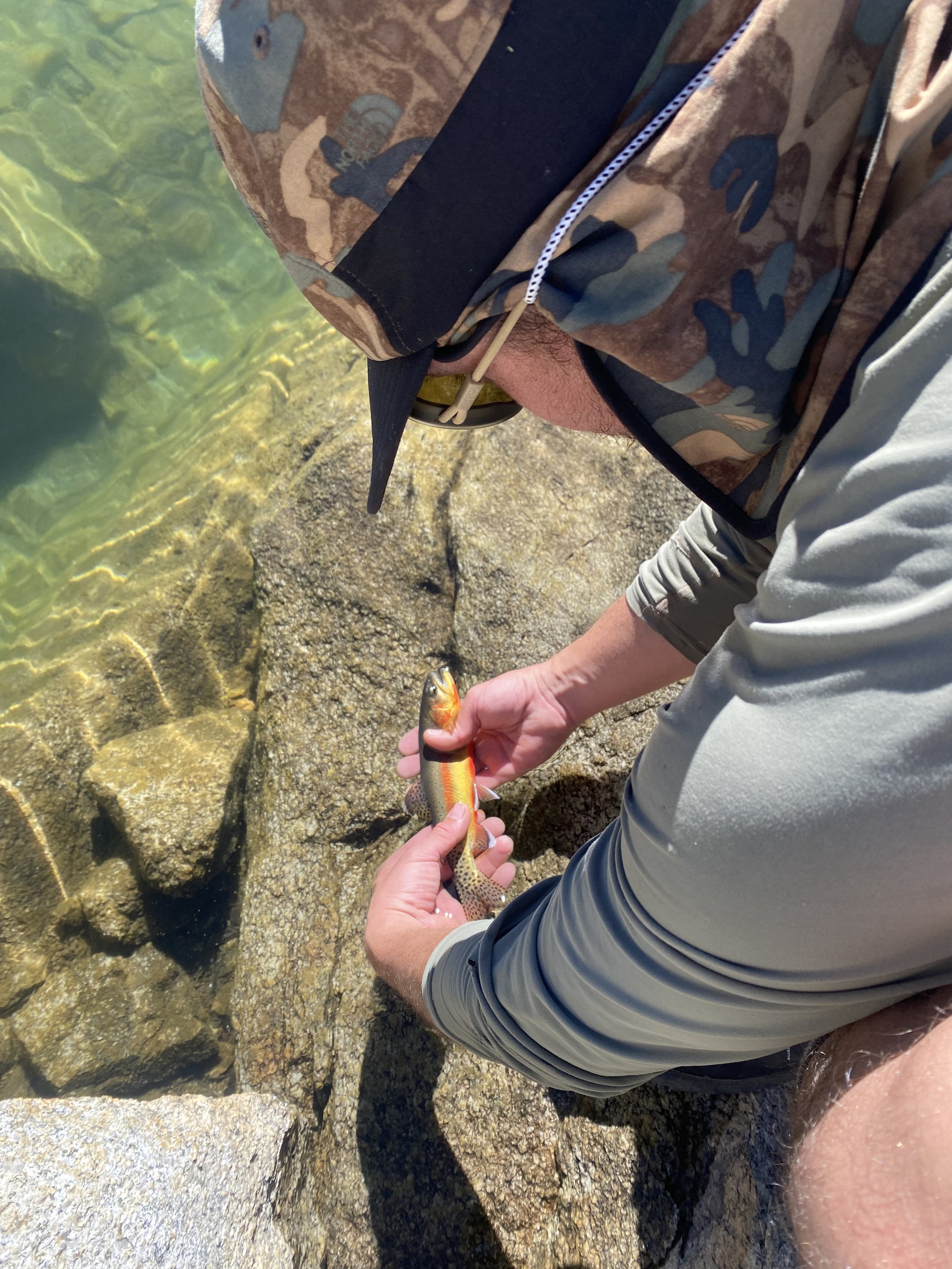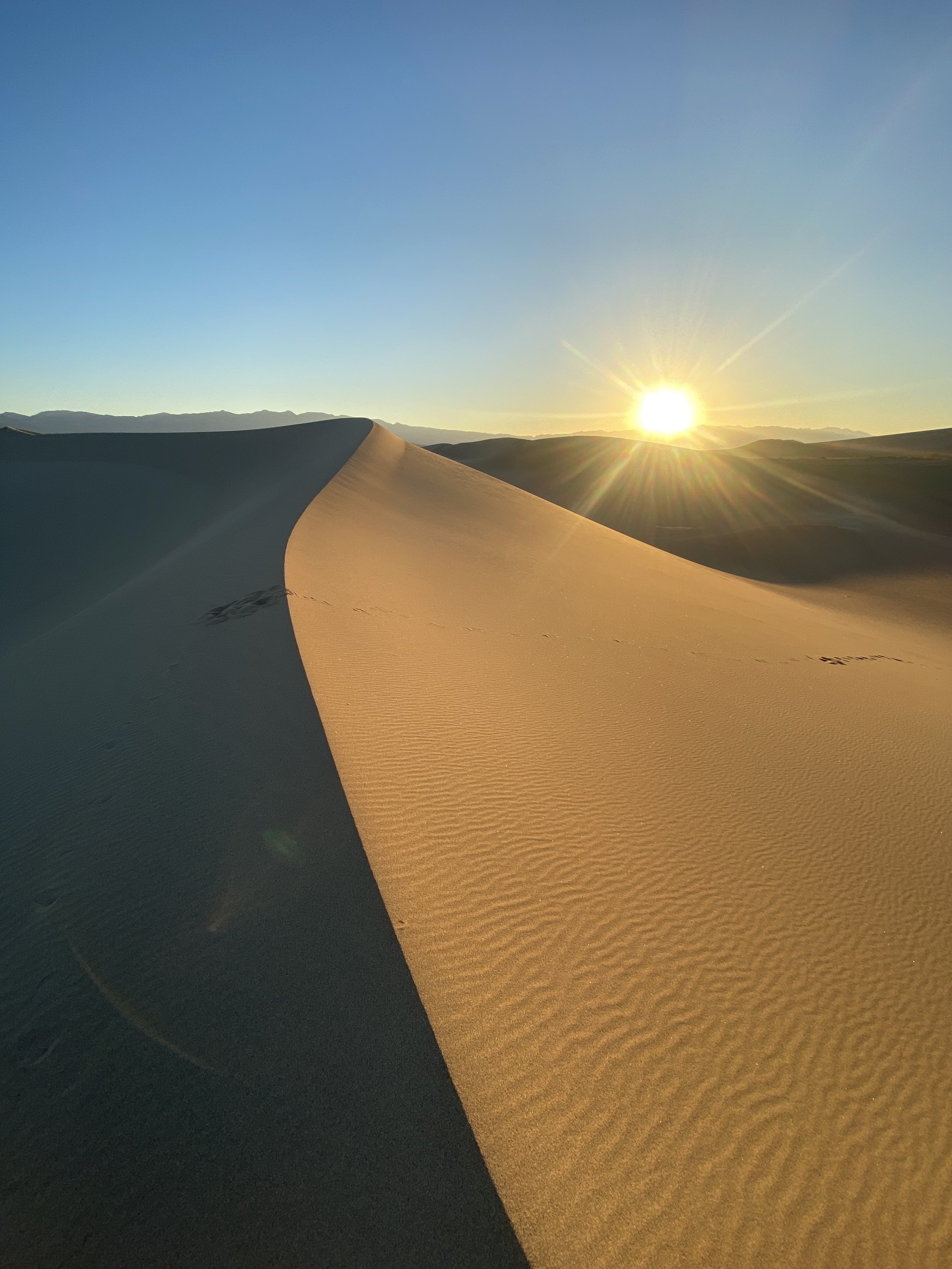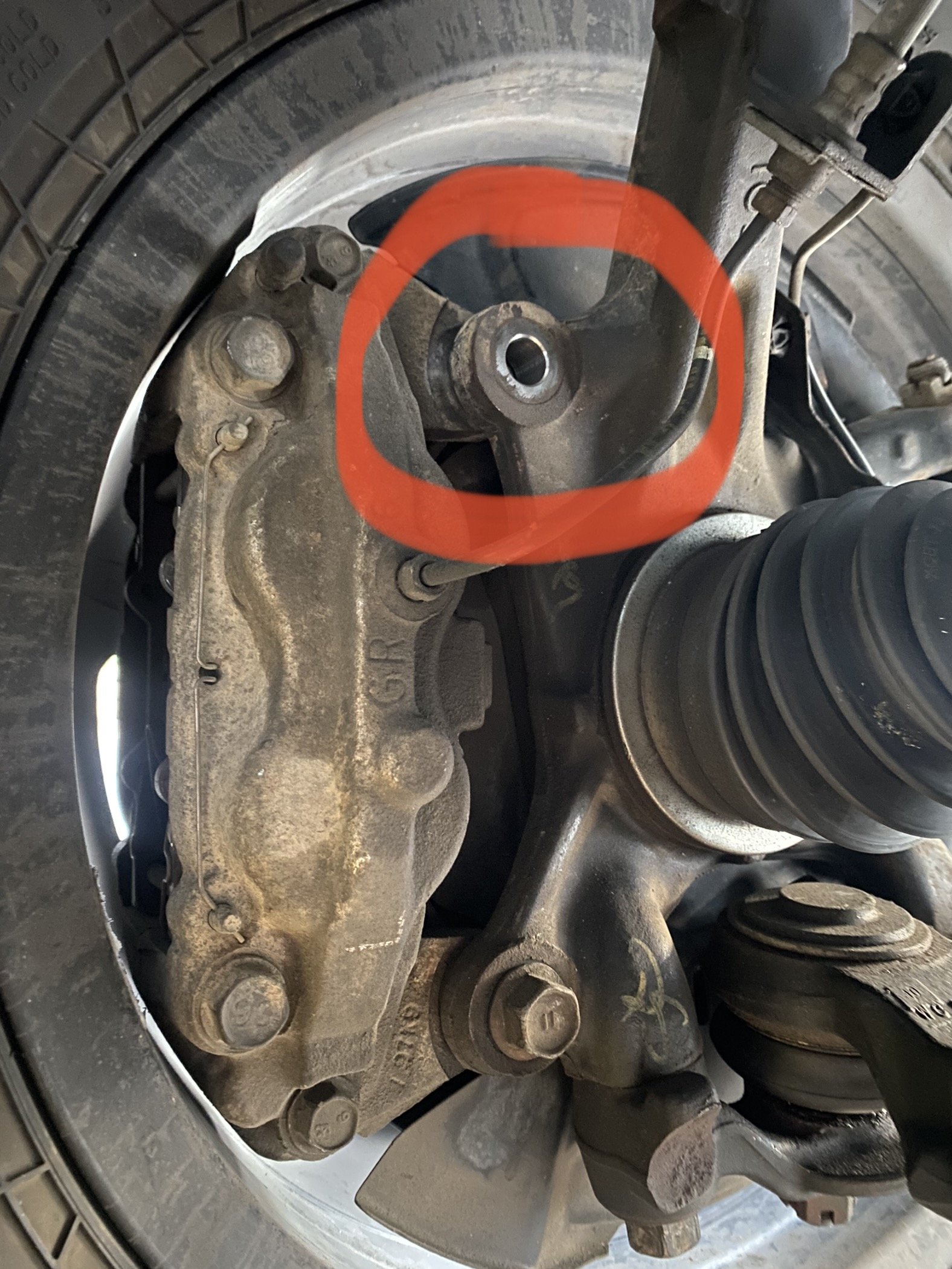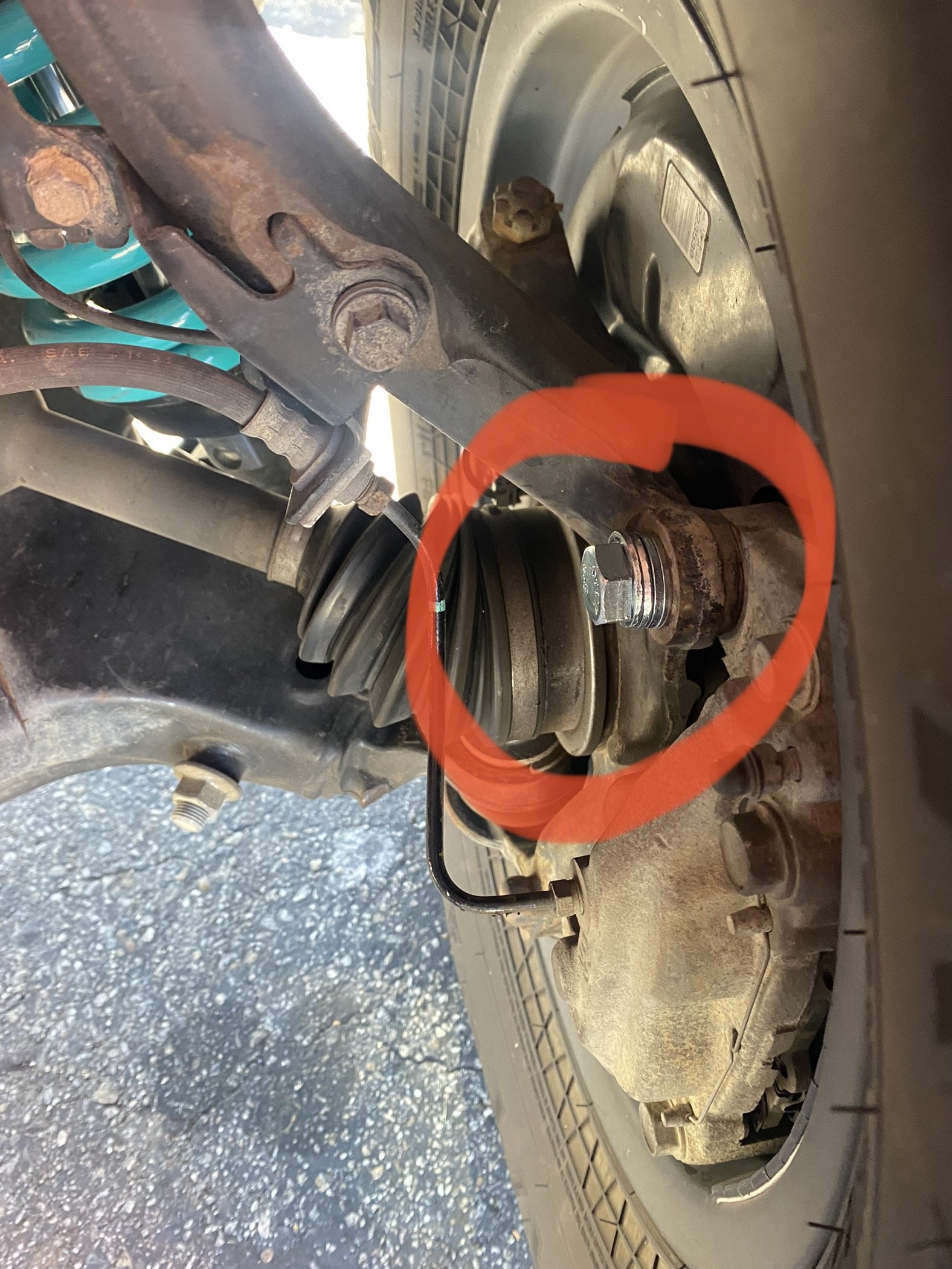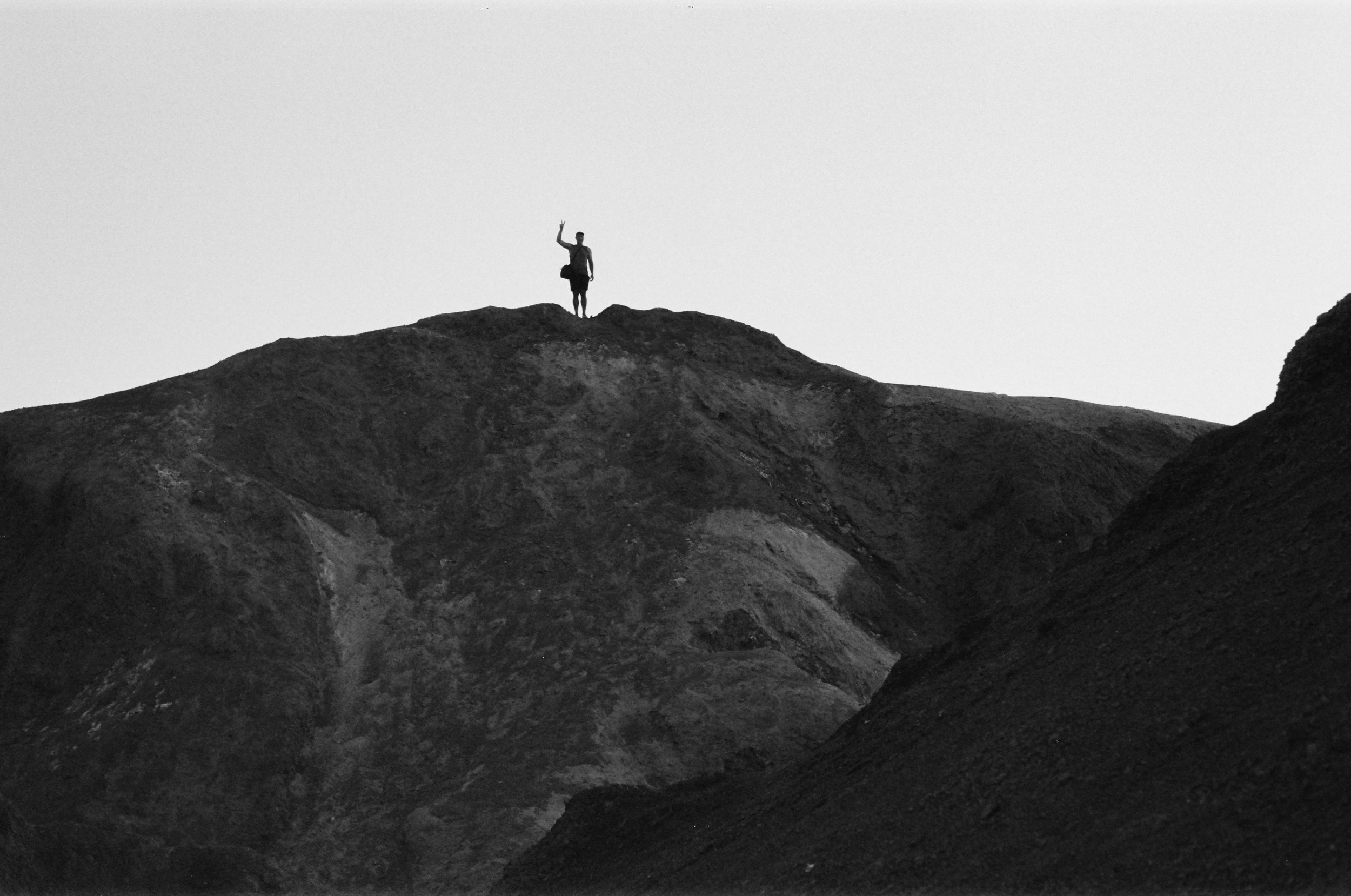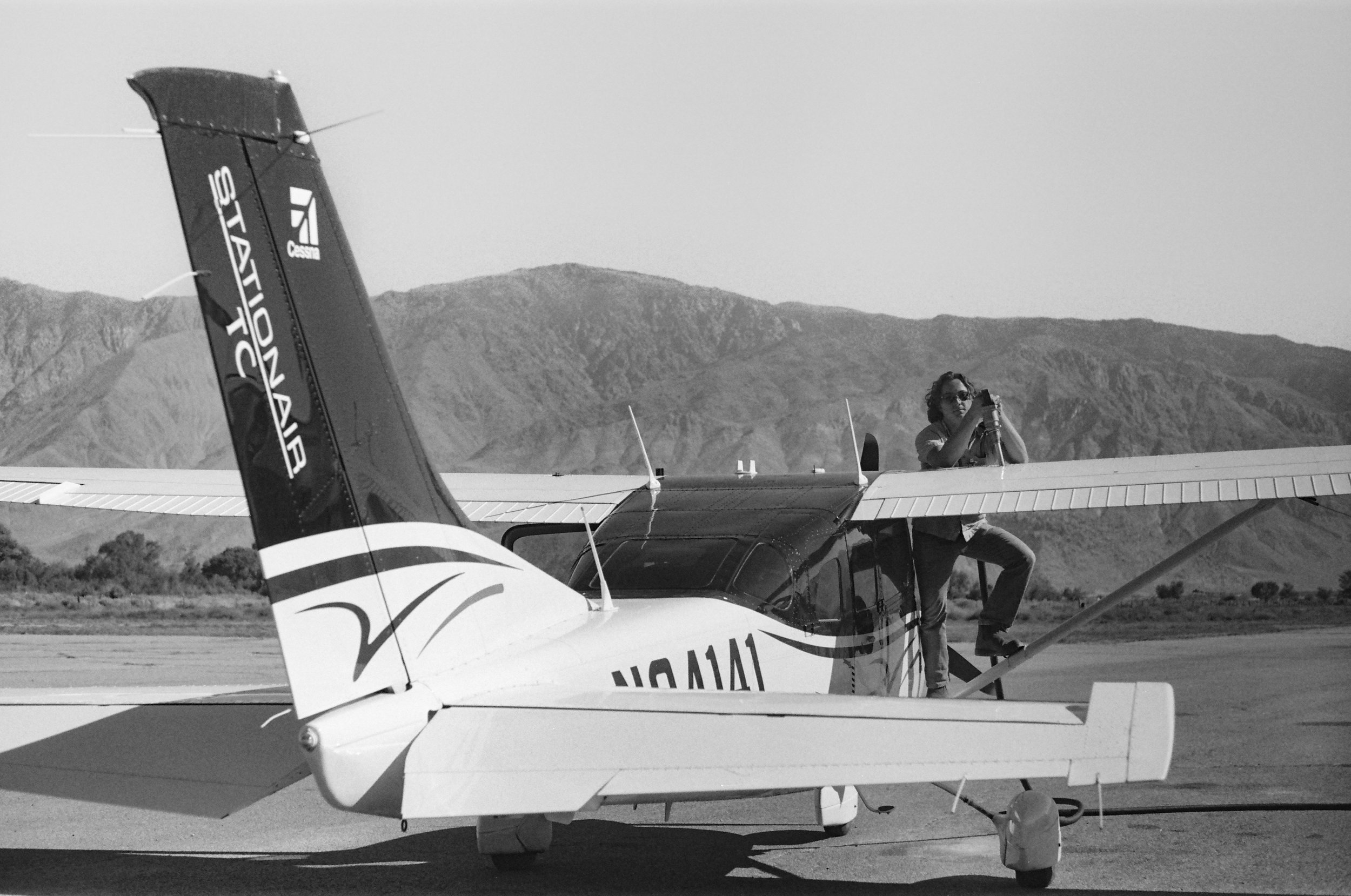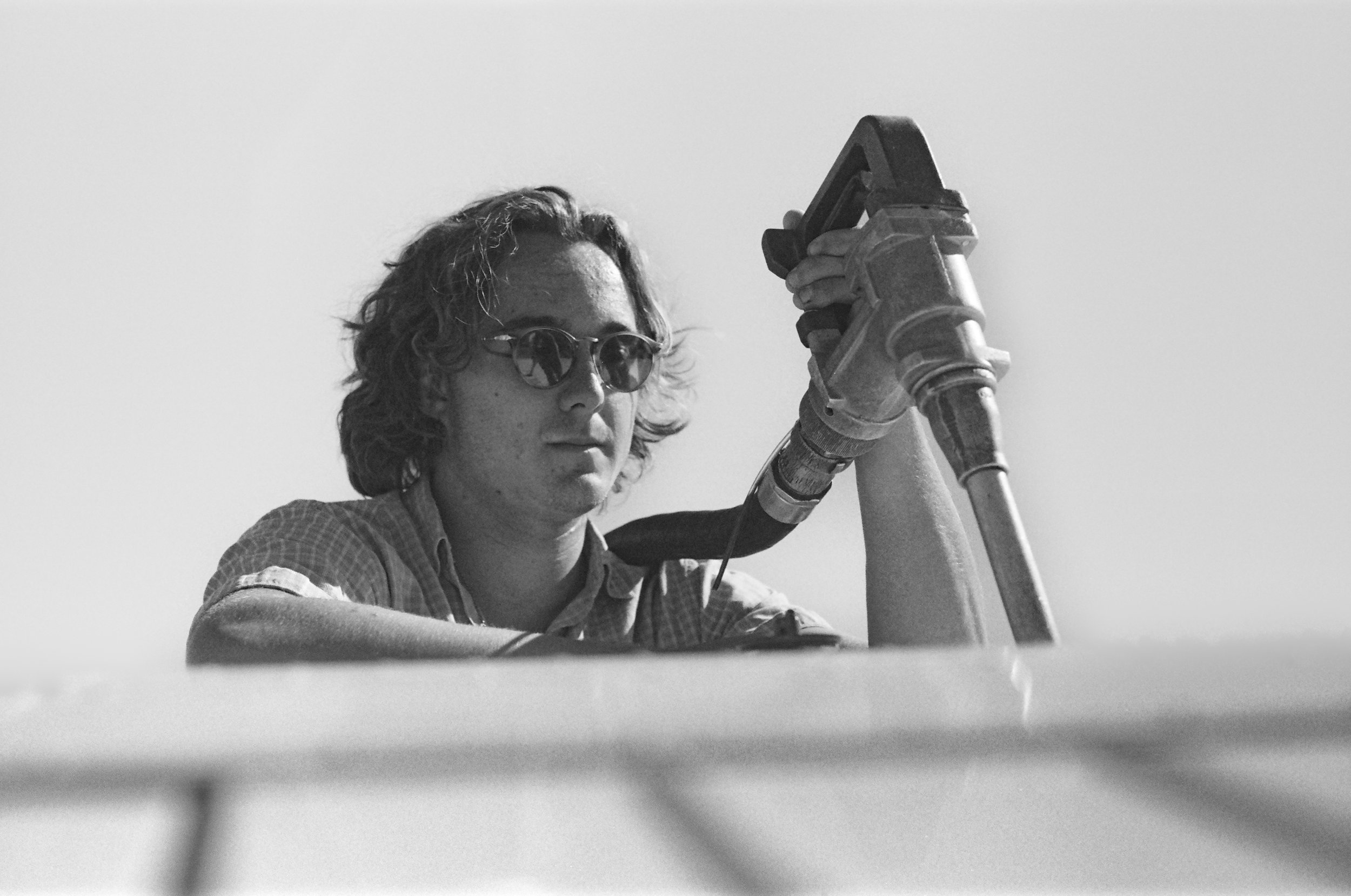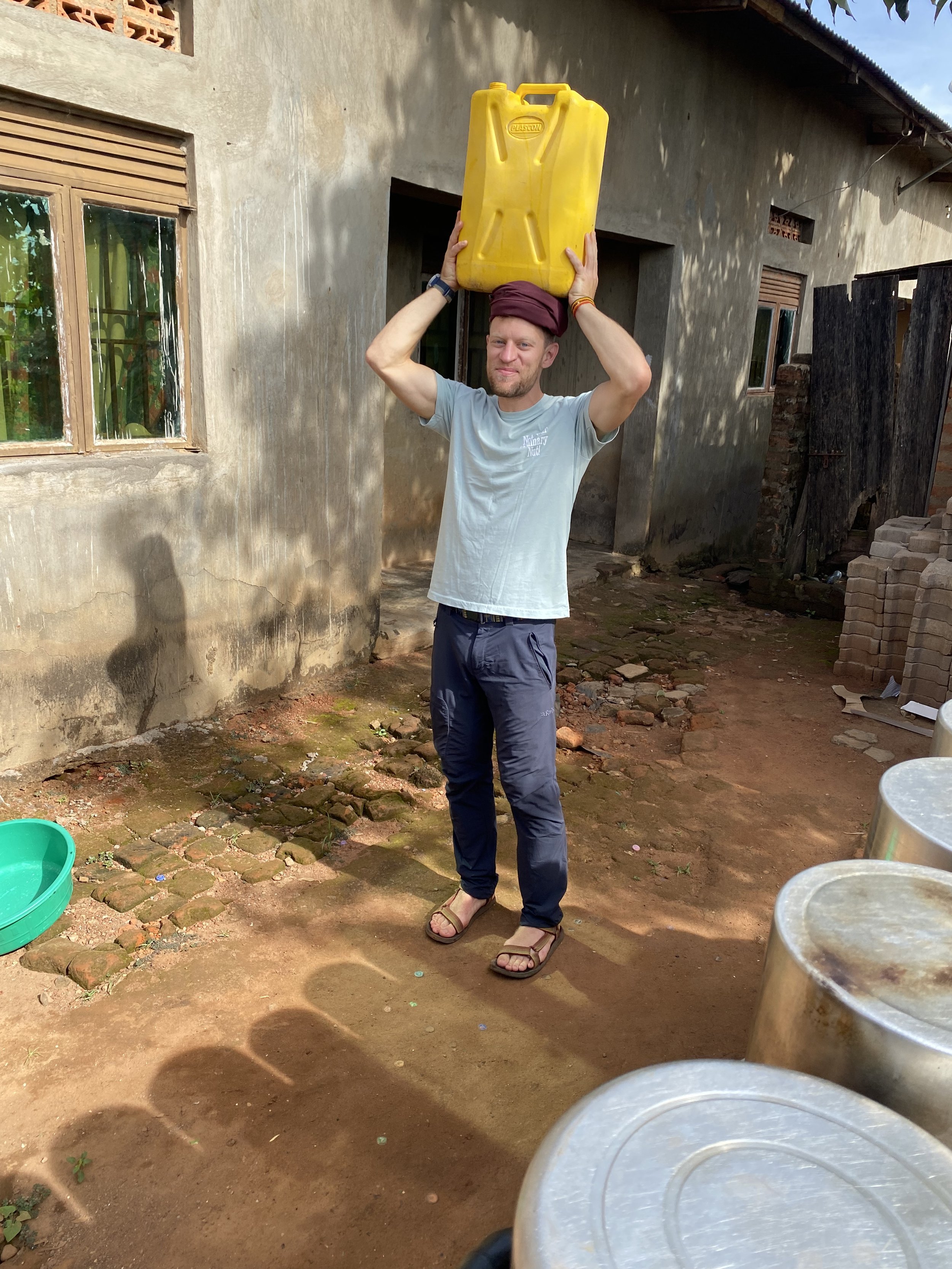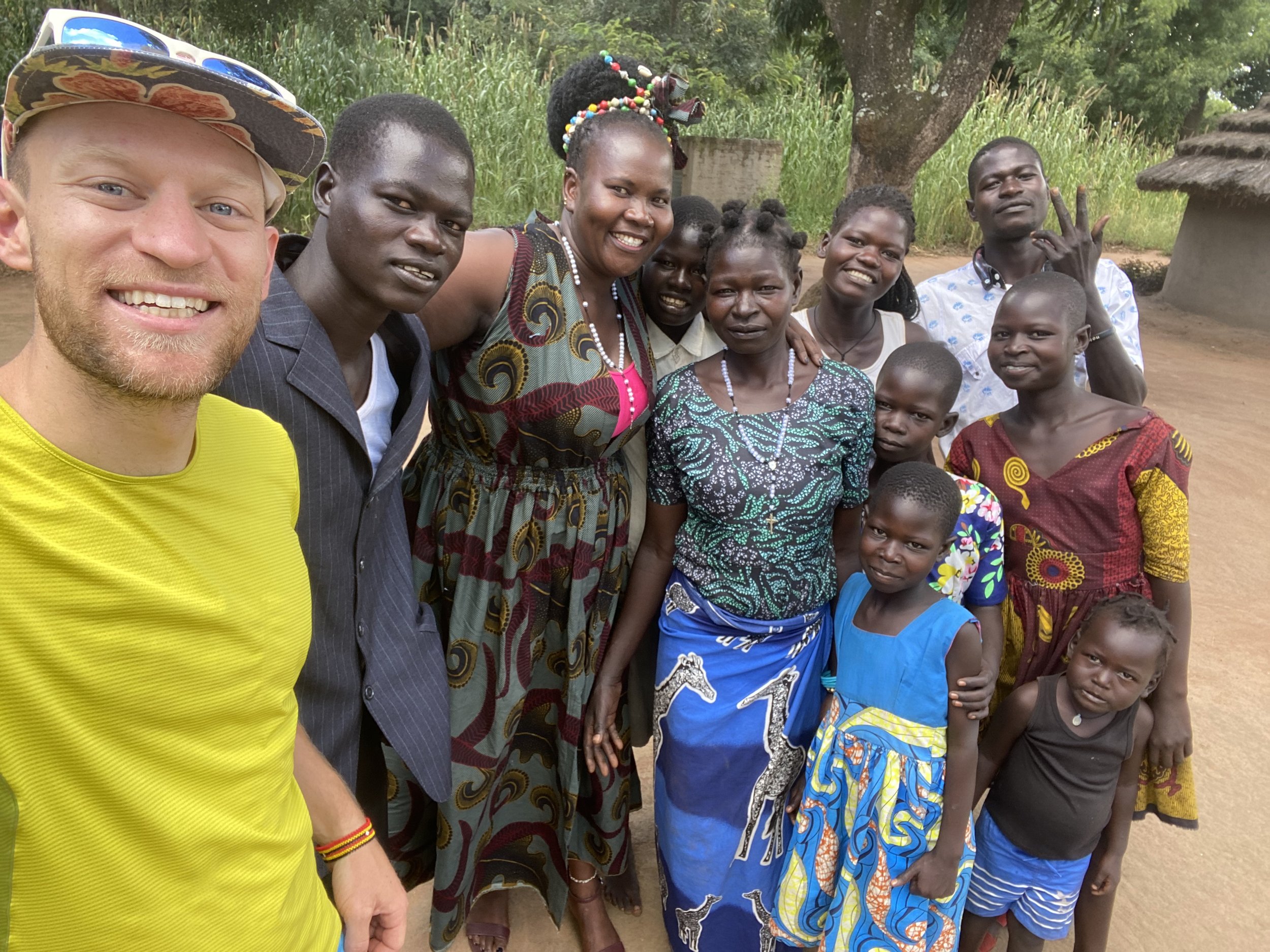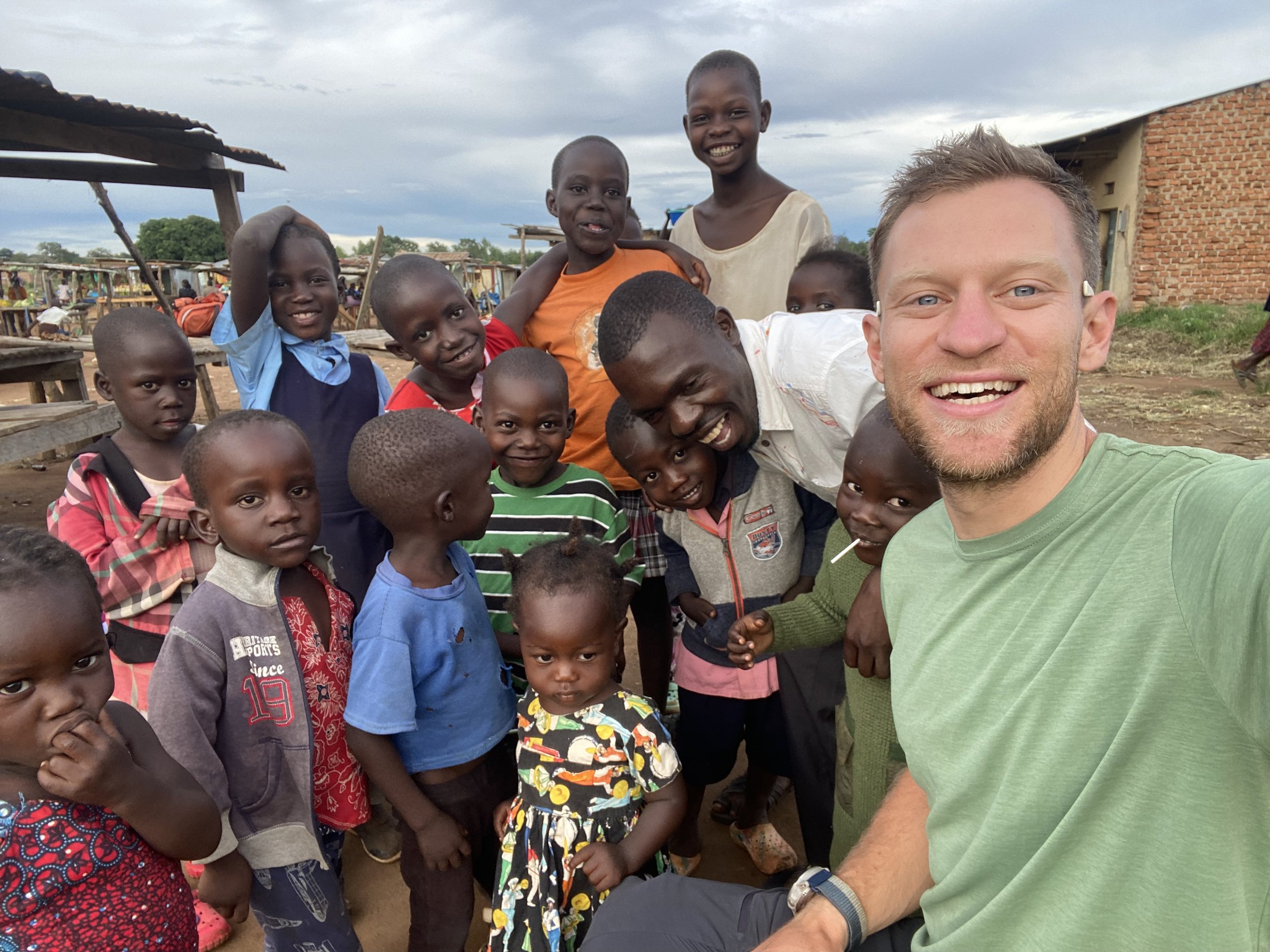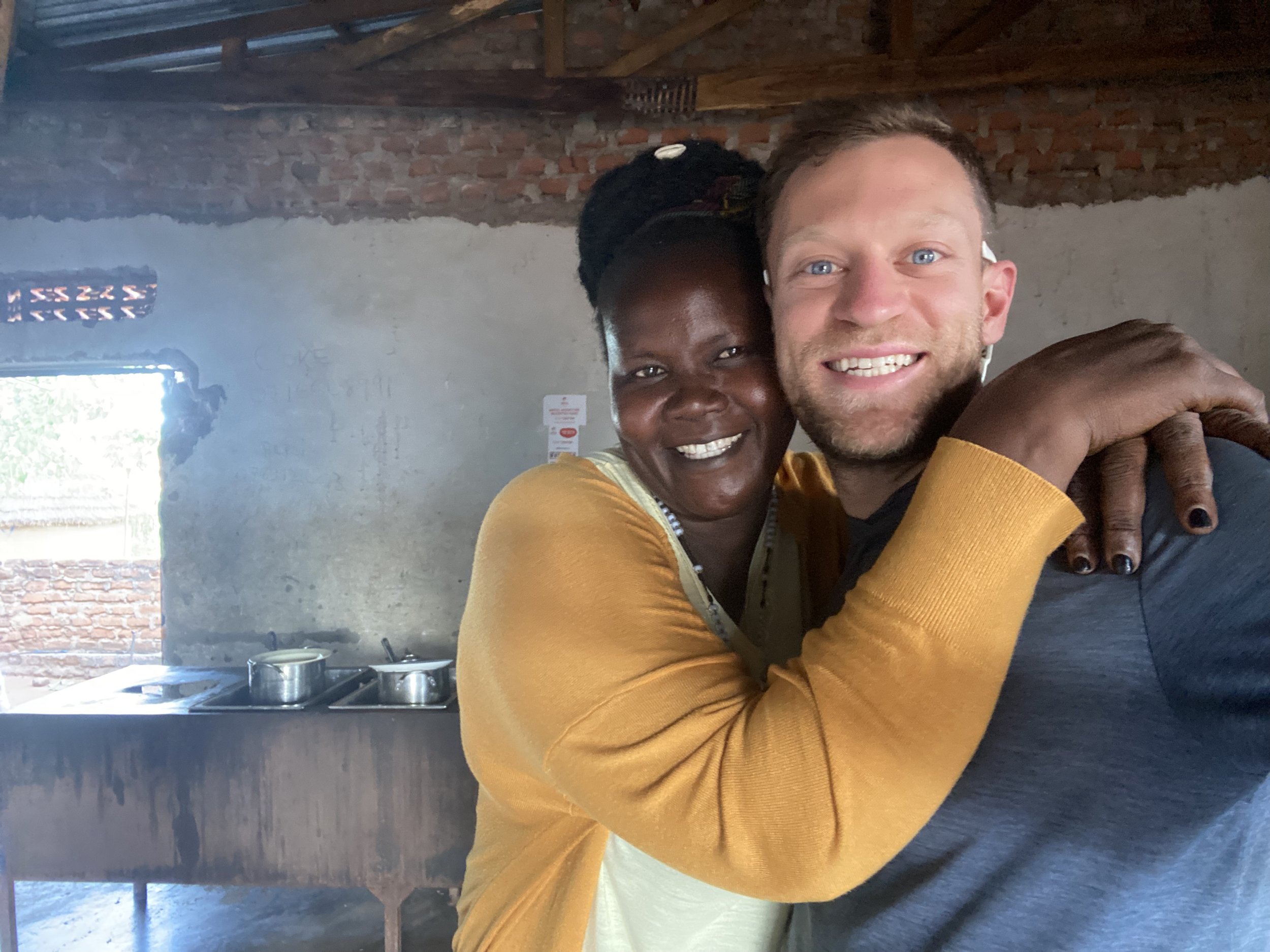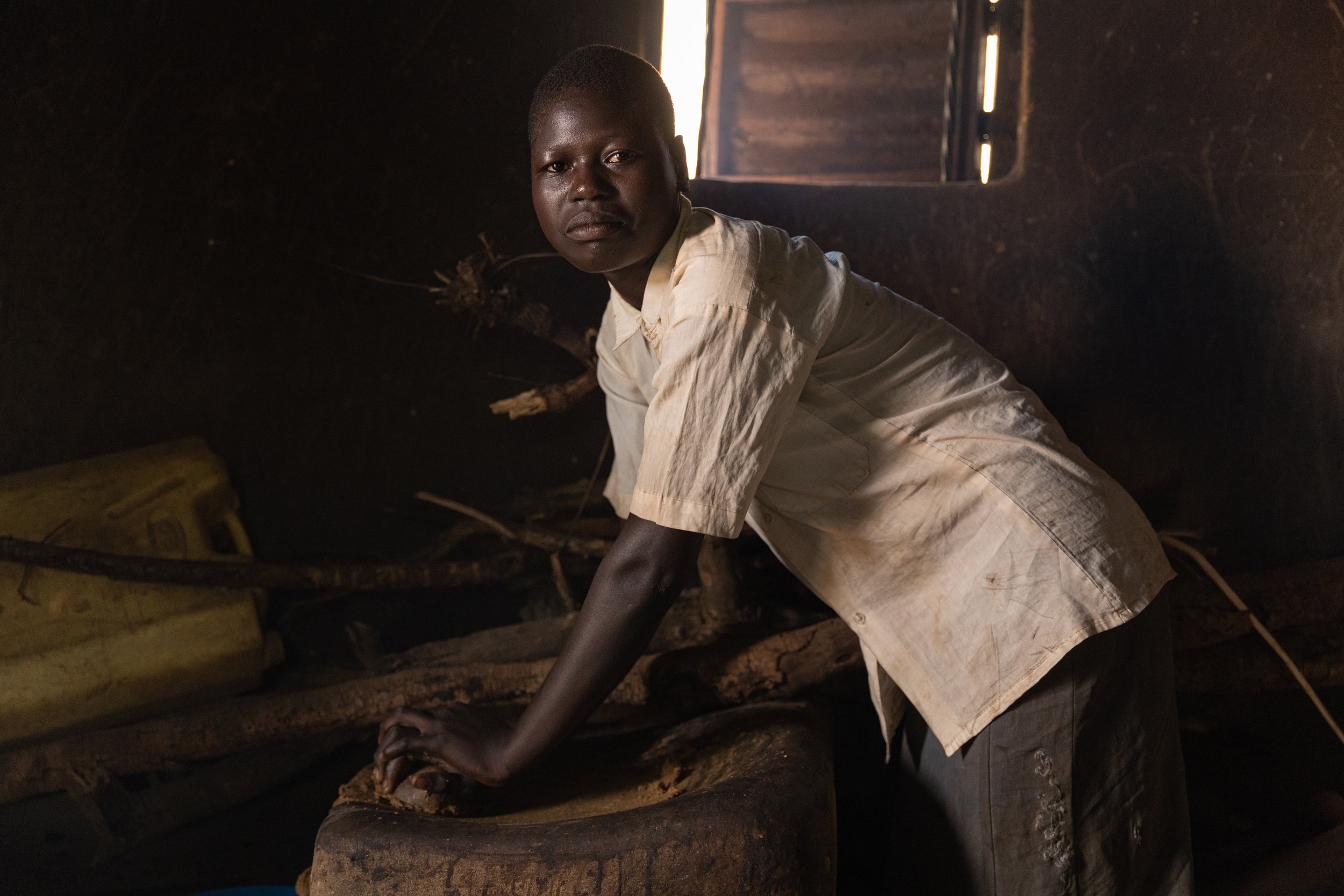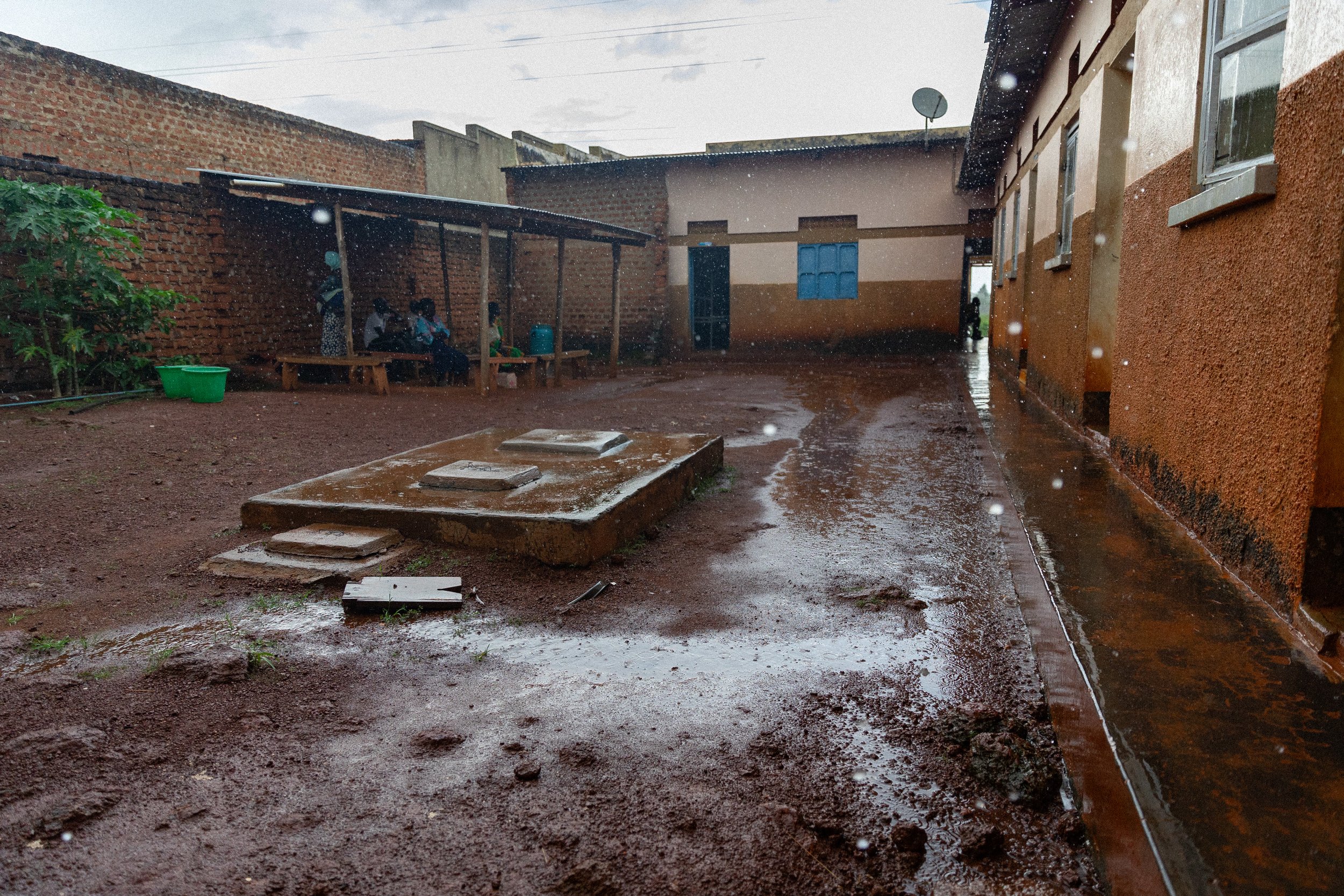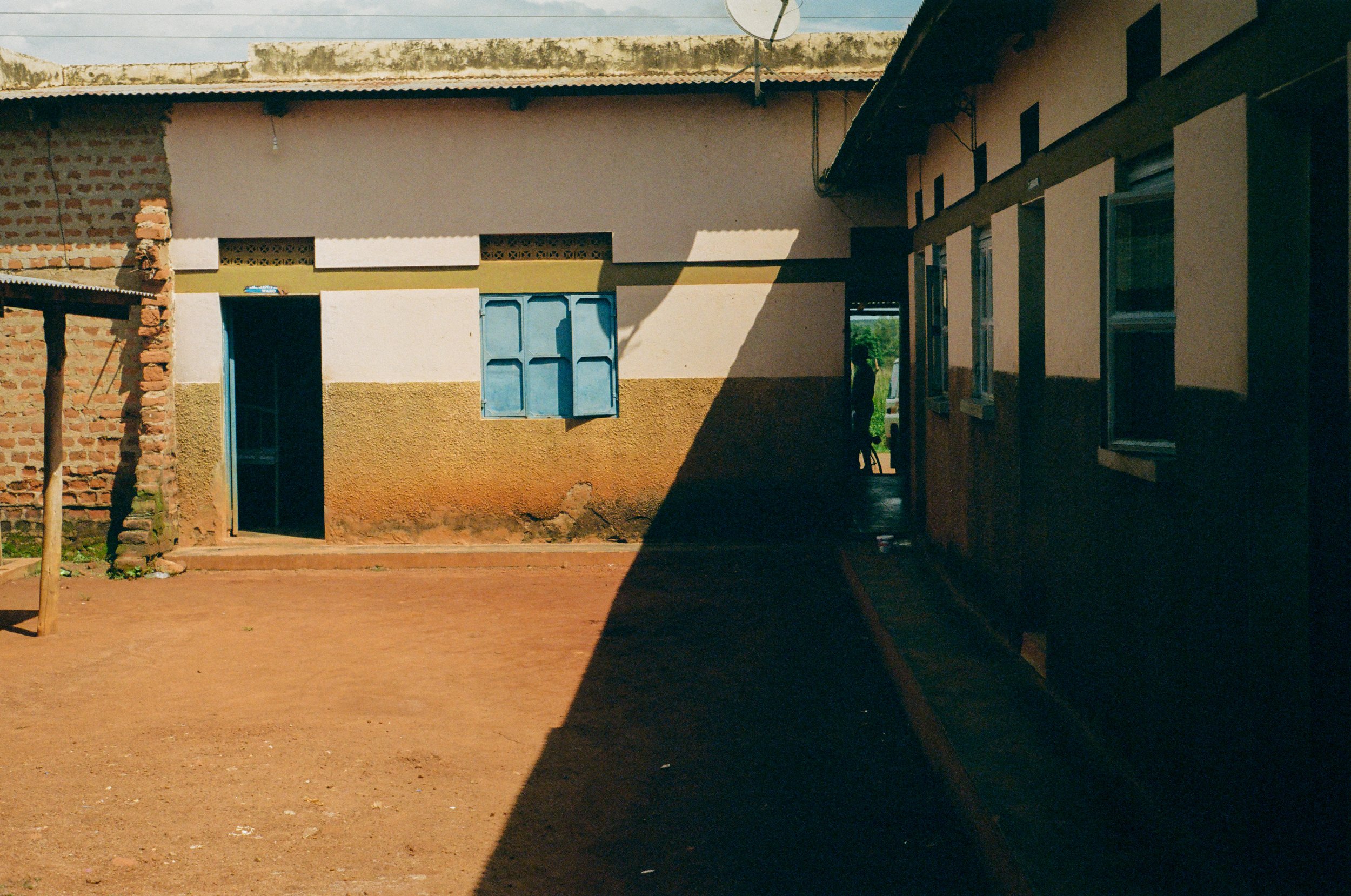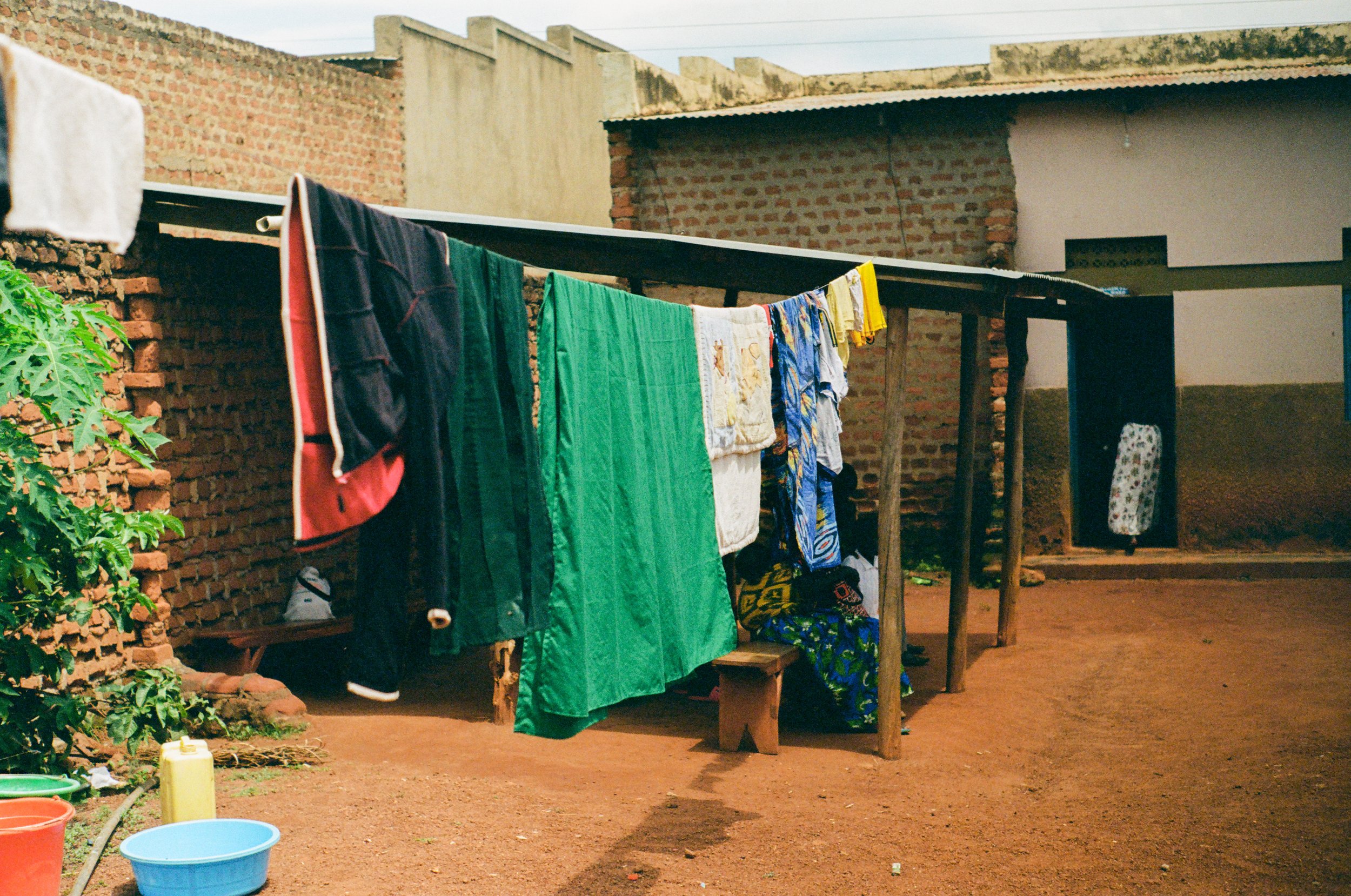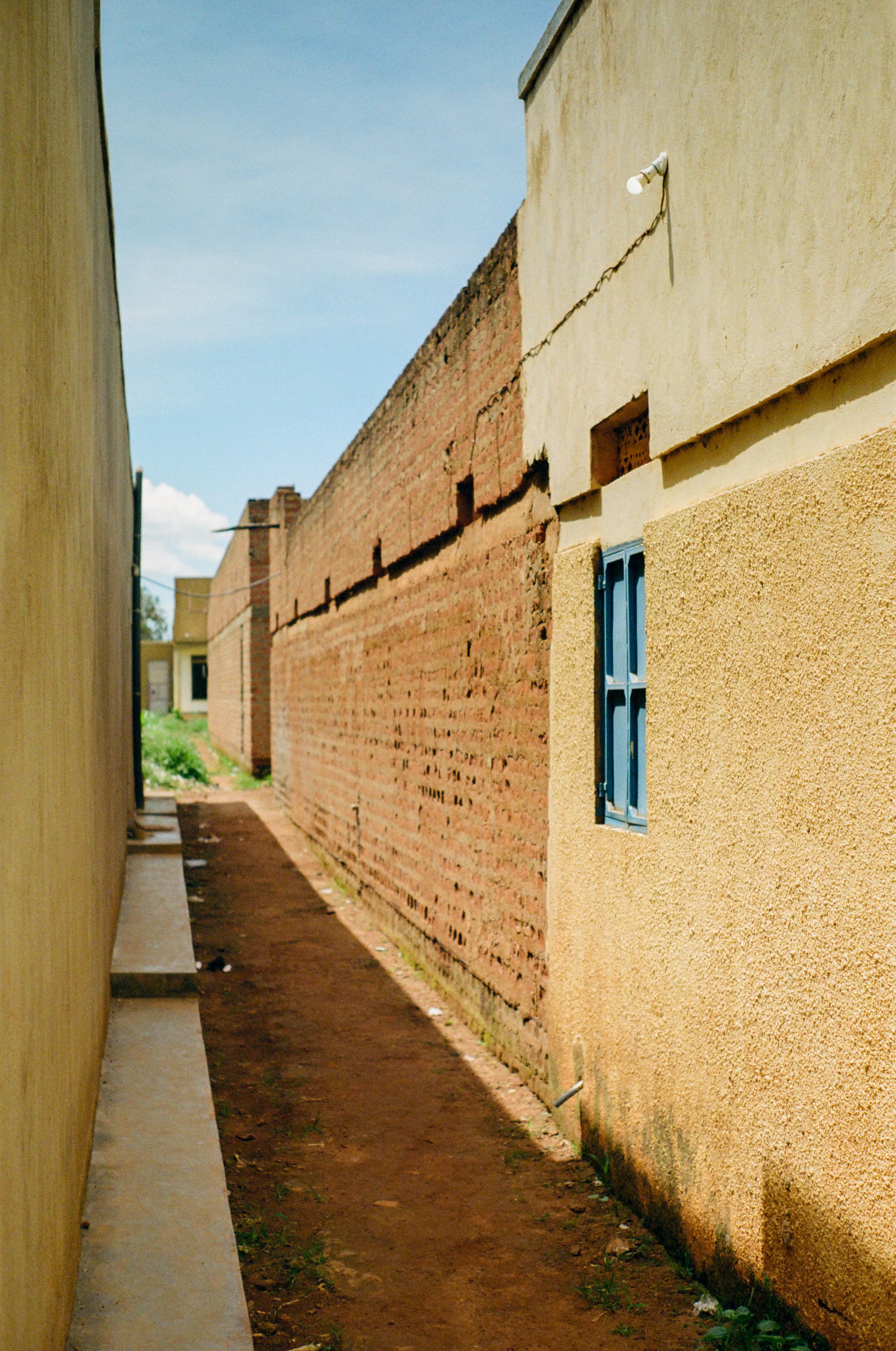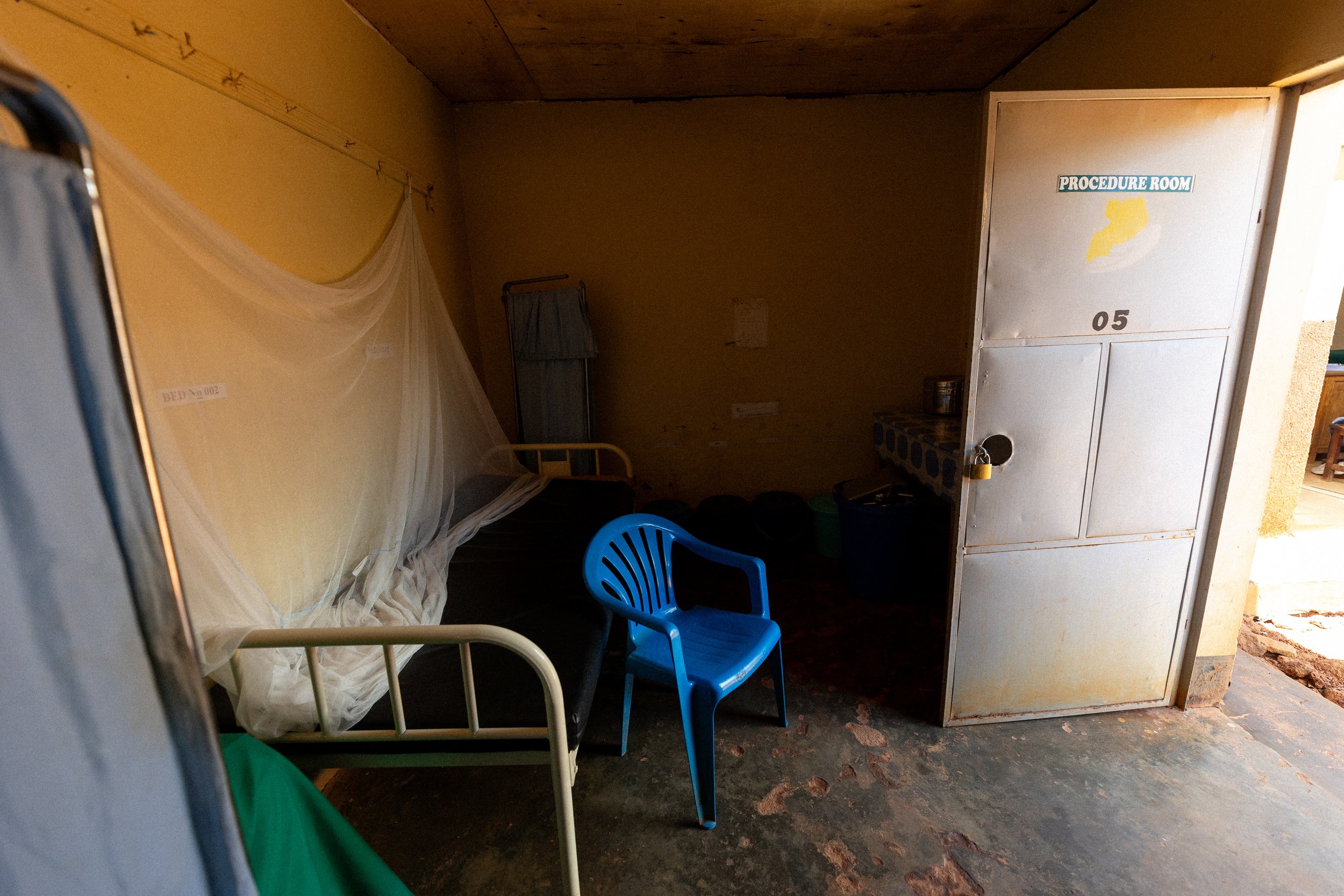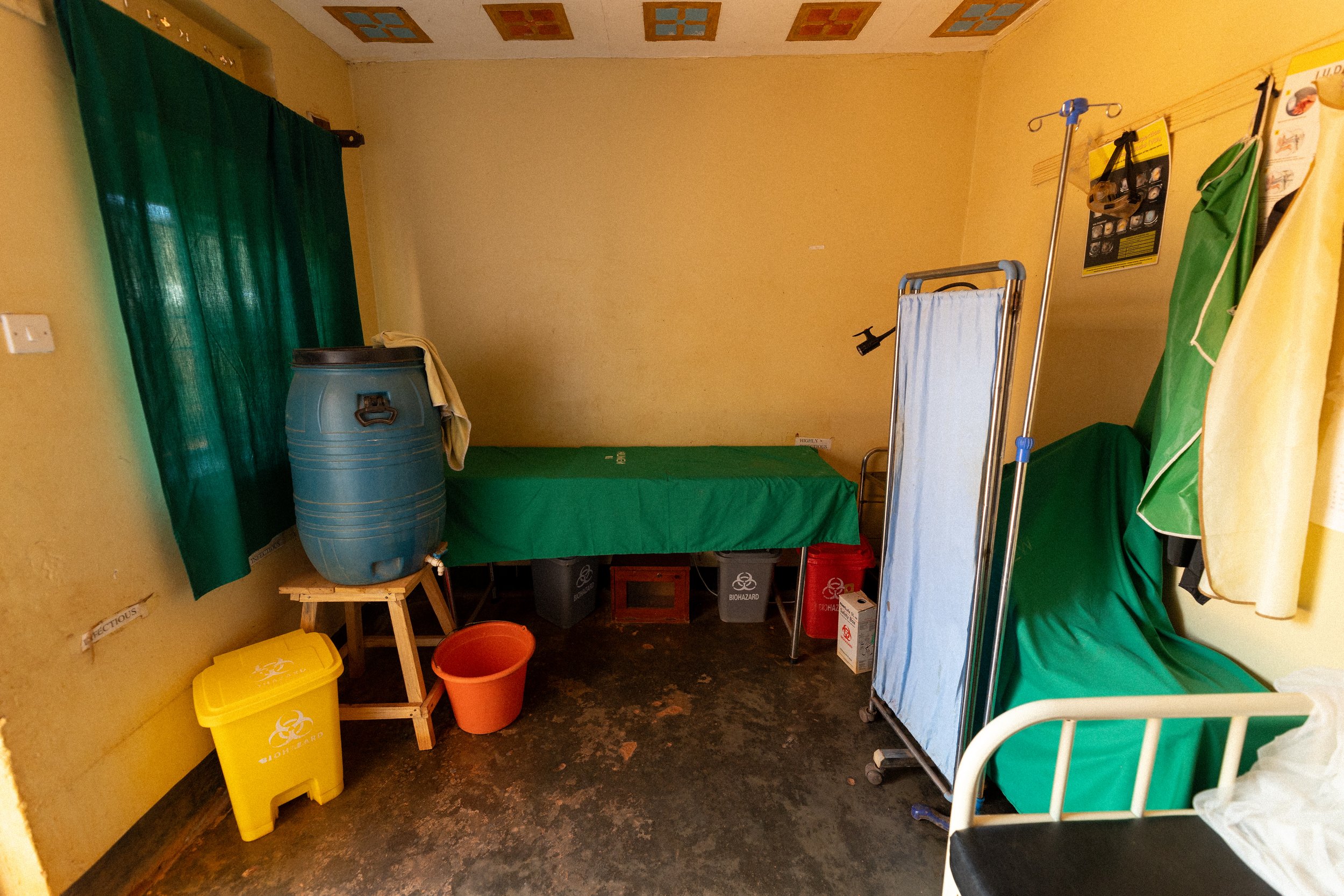A group of children stand in maize field in the village of Pagwari, just outside Pader, Uganda.
BACKGROUND
My friend Dr. Daniel Ebbs, Medical Director at Yale Childrens and founder of MGY, a nonprofit promoting health access in rural locations worldwide, had been asking for years if I’d like to join one of their trips to Northern Uganda. I have made it my part of my speciality to operate cameras in austere environments, so the idea was born to shoot a short doc for fundraising purposes for MGY. Several months ago, a single text came across my phone: “Hey, how you been; I want to follow up on your idea on doing a short documentary with our team and the health access problems in Northern Uganda, where you at these days?”
Although I do tons of shooting in the mountains, my roots are in documentary work, including environmental portraiture. I planned to shoot some portraiture on top of motion to make it a well rounded trip. Environmental photography is defined by Wikipedia as, “a portrait executed in the subject's usual environment, such as in their home or workplace, and typically illuminates the subject's life and surroundings.” I was super excited to return to my roots, meet amazing people, be embedded in a community far different from mine and photograph it all. This writeup will primarily focus on those environmental portraits, travel, my approach to photographing different cultures and more odds and ends. As this is also somewhat of a behind the scenes post, there will be other photos - some film, some digital, some iPhone to support certain entires. As always, I will include some, but not all, of the professional work alongside. I hope you enjoy.
NATGEO
Death Valley Dunes. Delta 100
My initial departure date for Entebbe, Uganda, was delayed by several days when I got a call from my friend Chris Burkard asking me to assist on a shoot for National Geographic. The shoot was in several California National Parks (Sequoia, Kings Canyon and Death Valley) for their updated national parks book. Of course, without question, shooting for two incredibly legendary entities was worth delaying my trip. For 8 days, we (along with his full time assistant and bad ass Jeffery Brundage) traipsed around California, driving hundreds of miles, shooting big Sequoia trees, backpacking to the Rae Lakes in Kings Canyon and finding every bit of interesting light in Death Valley NP possible. We wrapped it all up by having pilot Alex Sparks, aka Sparks, fly us around the roofs of all of these parks to capture them from the air. This trip had it’s fair share of roadblocks, kinda literally, between ultra foggy conditions in Sequoia, brake problems on Chris’s Tundra from a missing caliper bolt, Death Valley being completed closed until the day we arrived (and we still managed to get ourselves on a closed road that was torn to shreds). As always, where there is a will, there is a way and all ended up being fine— requiring a change in mindset and some elbow grease. Chris even got to catch his first Golden Trout! An epic trip all around. Once the plane landed in Central California after our aerial shoot on day 8, I had about 6 hours to do laundry at my parents house, collect any last minute Africa items needed, repack my gear and ship some stuff home before boarding my first flight in a 48 hour journey to Central Africa.
GETTING THERE
I managed to sleep decently on the trip there, lining it up enough hour-wise to be somewhat coherent upon landing in Entebbe. Because my trip was delayed, Daniel and our friend David were already situated up North, in Pader, Uganda. They arranged for a driver to pick me up and deliver my 5 hours north, to a town called Gulu, where they would meet me after their own 3 hour drive from Pader. My first taste of life in Uganda came from the drive from the airport to Gulu— the driving is hectic. Impressively hectic, actually. At any moment it seems like you will be in one of those deadly 30-car pileups— but they seem to all know the exact concoction of speed, distance, horn honks and waves to make it all work out. We managed to get ourselves stopped at a police checkpoint due to my driver having a long-overdue ticket of some kind. Apparently me being in the car helped him wiggle out of it again. 5 hours later, as nightfall approached, the afternoon monsoonal rains unleashed their fury. Stopped at the predetermined petrol station where I was to meet my companions, my driver helped me to obtain the key to the small outdoor outhouse from a guy kitted out with sandals, shorts, a tank top and a large AK-47 around his shoulder. I remember that solidified a feeling of isolation from what I knew. “I am in it - I am here,” I thought. Nothing to do but accept what was in front of me and begin learning the intricacies of a new land. The pouring rain would delay my companions for hours as it washed out the roads they were traveling on. Eventually they arrived and a meeting of pizza and beer ensued between the members of MGY, and the members of NUMEM, the group MGY supports in Uganda, which I’ll tell you about below.
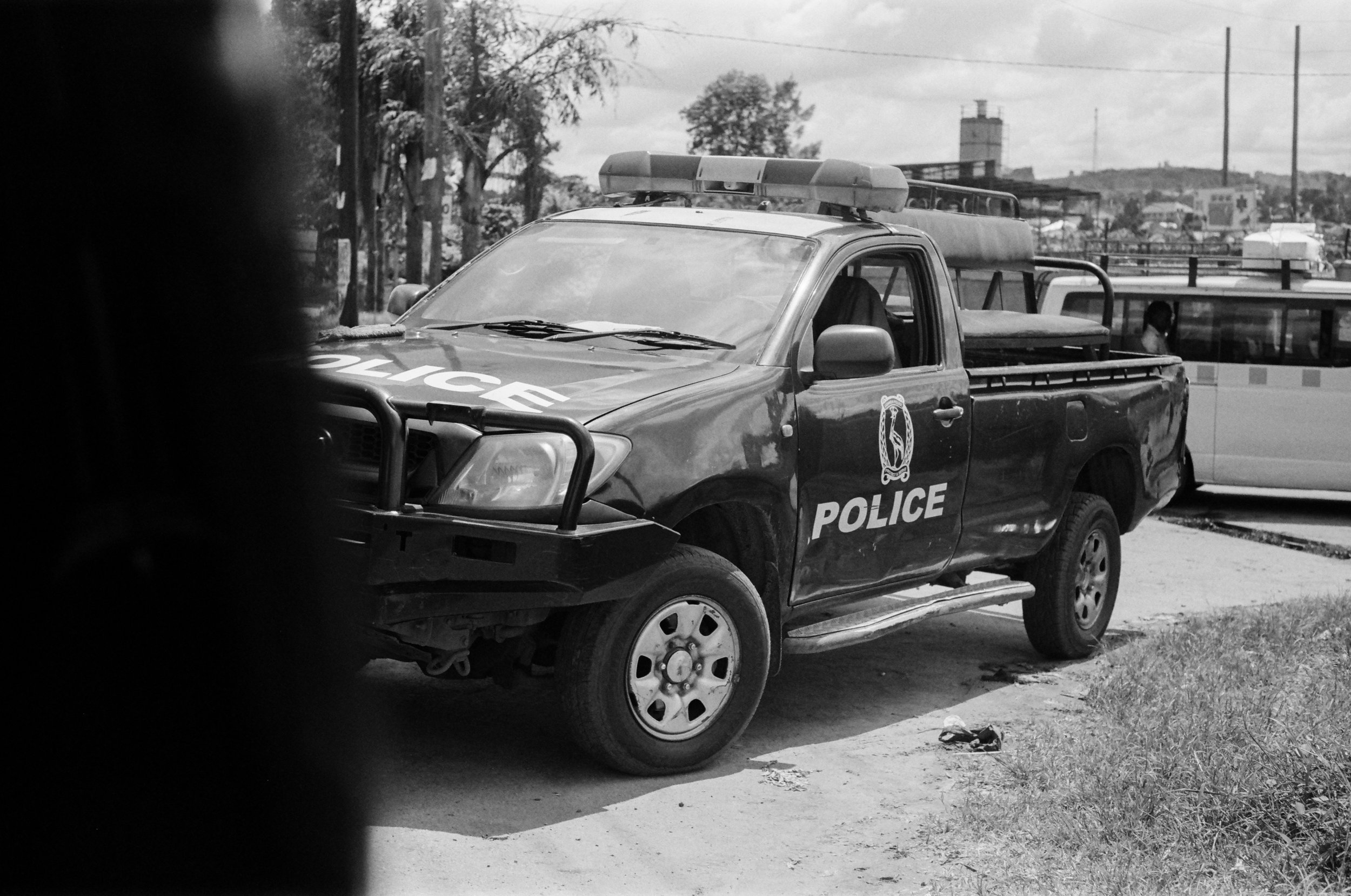
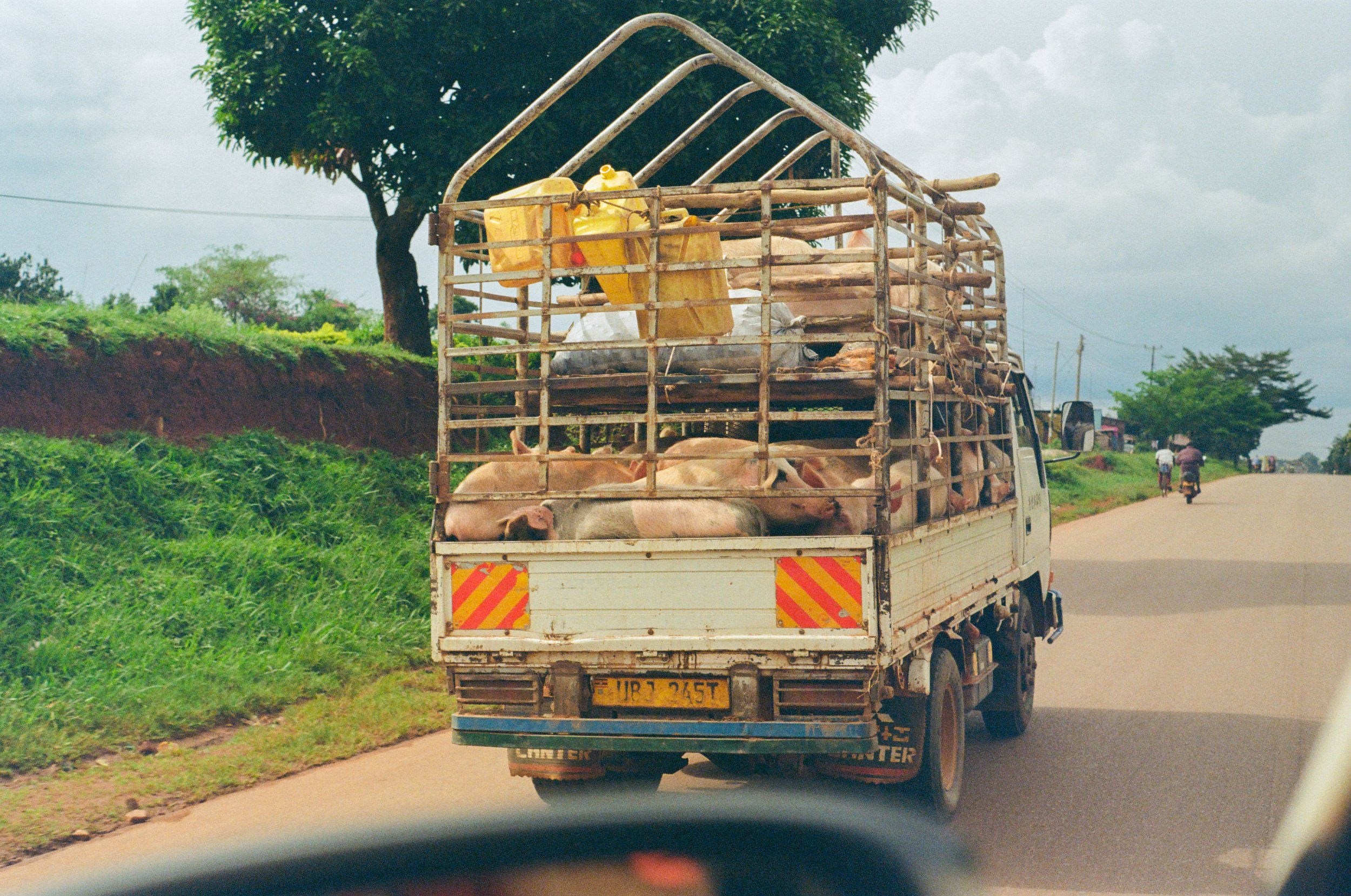
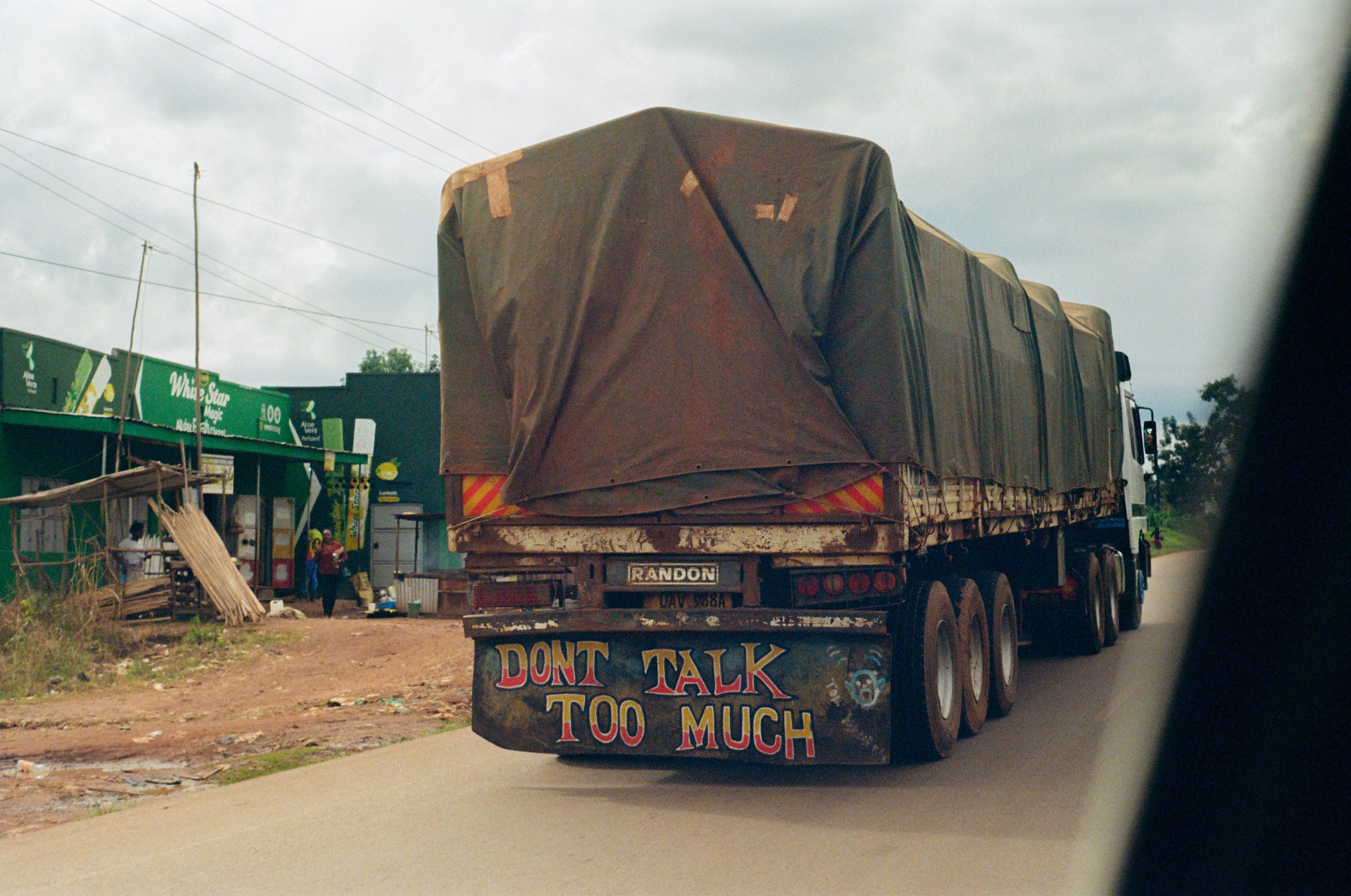
NUMEM
MGY supports a group in Northern Uganda called NUMEM, the Northern Uganda Medical Mission. It is a Community Based Organization (CBO) operated by a group of local doctors and other medical professionals that are working to make a difference in their own underserved community. Of course, ideas and plans can’t go anywhere without funding— which is MGYs current goal and role with NUMEM. They currently operate a clinic in Pader, Uganda— but MGY and NUMEM have aspirations to build a proper hospital in Pader District, since it is one of the only districts in Uganda to not have one. Over the next two weeks I would become embedded with NUMEM, the clinic and the greater Pader community, which is the first step to creating successful cultural photography work anywhere.
A family in Pagwari Village. Kodak Gold 200, 35mm.
OBJECTIVE
I am not stranger to writing blog posts about my experiences around the world— but it is very hard to cull what ends up in the final version - especially the imagery. If I wrote about every thought or experience I had, it would be hours long worth of reading. I expect to overdue it on the imagery, but I am only human - and it’s largely the entire purpose of this blog post! I will interject thoughts and feelings on several topics moving forward but I will work to keep it confined to the creative and personal experiences.
When maneuvering around in such a foreign place, it is important to have a local person/translator, sometimes called a fixer. They know the places, people, customs and more to make a photography objective successful. Of course, the objective of this trip is less personal and more focused on creating work for NUMEM/MGY to fundraise for the community hospital. My main fixer and friend’s name is Oryem Bosco, a Physician’s Assistant at NUMEM clinic and all around amazing human. He was instrumental in making requests I had happen— whether it was requesting to shoot different types of farmers, laborers, children, families, elders, etc. He would, on his own time, head into different villages and “request an appointment.” After explaining who I was and what I was there to do, I was welcomed pretty much with open arms. It is imperative to take the time to get to know the subjects you are photographing well before every firing the shutter button. I spent lots of time with people without ever taking a single photo. I even skipped out shooting to participate in a Bwola ceremonial dance, which is one of the most memorable things I’ve ever done!
Portrait of Oryem Bosco, my fixer and RN/Physician’s Assistant at NUMEM clinic in between seeing patients.
As I develop my style, I have been making it a practice to give little direction to my subjects, other than simple posing adjustments and/or lighting changes. Generally, I have found it important to take direction from my subjects on what kind of photo they’d like to have taken of themselves. Of course, not everyone knows and I happily offer suggestions if that’s the case. Generally, there is a trust built from the initial meeting that is reinforced by this control still being in the hands of the subject. After this trust is built, I’m not afraid to ask for specific things if I see the utility of it, such as a new location, maybe an outfit change if it’s offered, or multi subject photos. Perhaps on a hyper-specific commercial shoot this would have to be very different— but it’s the best approach for me for now.
Portrait of a Bricklayer. Bricklayers work about 10 hours a day for about 15,000 Uganda Shillings - about $4USD. This Bricklayer was working on a family construction for Oryemo Bosco, my fixer.
Portrait of Okidi Denish, Vector Control Officer for Pader District Health Office in Pader, Uganda.
Portrait of a lab tech at NUMEM clinic. Pader, Uganda.
Portrait of a young Acholi boy at the local soccer field. Pader, Uganda.
Portraits of Odokonyeko Philips and Opio Hazarrd.
Portrait of a child posing inside the local market in Pader, Uganda.
Portrait of Prossy. Local market, Pader, Uganda.
Portrait of a Bricklayer and his daughter. Bricklayers work about 10 hours a day for about 15,000 Uganda Shillings - about $4USD. This Bricklayer was working on a family construction for Oryemo Bosco, my fixer.
MY EXPERIENCE
Uganda, as well as much of Africa, is a country of subsistence farmers. Most everything that they have to eat is grown/raised either in the community or not too far outside. This rang extra true the first morning I woke up in Pader and was offered Nescafe. Uganda is the largest coffee producer/exporter in all of Africa, yet it doesn’t make it as far north as Pader district. Northern Ugandans, culturally, haven’t had access to coffee due to the South having the primary growing conditions— It’s not in the tastebuds of the North to desire true coffee. Thankfully, at least, Nescafe and two teaspoons of sugar isn’t the worst thing I have ever had to drink. I also ate my first meat in over 10 years - roasted pork. It was actually pretty good! I was surprised by the amount of animal-free dietary options, which is how I prefer to eat at home.
Odong Samel, a 68-year old farmer standing in his field of Cassava root. Lunyiri Village, Uganda.
An Acohli woman tending to her maize field at sunset in Pagwari Village, Uganda.
Portrait of a butcher carving up a goat. Local market, Pader, Uganda.
Portrait of a brickmaker and son of a maize farmer. Pagwari, Uganda.
The storied history of Uganda and many other African nations is a book in itself. There are 56 tribes recognized officially in Uganda— I was deep in Acholi territory, known as Acholiland. The Acholi are originally from Northern Uganda and South Sudan, where the group can still largely be found today. The primary language is English, but only the larger towns and cities— primarily, Acholi is spoken in the villages of Acholiland with many in the towns and cities also able to speak some amount of Lugandan/Swahili. Culturally, it’s easy to see where colonialism peeks through. The overall “Western” way of life is an aspiration to many with modern clothes, technology and cultural practices popping up more and more. I even had incredibly fast LTE in Pader. The special thing about being as far north as I was is that deep Acholi culture still exists within the villages outside of the main towns. Traditional homesteads are peppered throughout Acholiland, generally accompanied with their farms. Traditional cultural dances are regular, including the Bwola Royal Dancers— I was lucky enough to get to participate in one of these courtship dances early on in my trip through a completely random set of circumstances. I have no photos, as I was a participant. I hope to photograph this beautiful practice and it’s dancers on a future trip.
Portrait of Gladys collecting water from a source considered unclean. Others here are seen using the water to wash clothes, motorbikes or to bathe.
Acholi women wash clothes at the same unclean creek.
An Acholi man washes his motorbike at the site of an unclean creek.
Acholi women are strong as hell, often carrying water from varying water sources (unfortunately most sources directly outside of larger town centers are unclean) in large 5 gallon jugs on their heads and in their arms— they also are managing the households through raising children, cooking, cleaning and everything in between. The men have a responsilbity to provide financially, which is a failing system that leads many families to poverty and leaving children to work and go hungry. In more structured family systems, every one pitches in to farm, tend to the land, carry water and generally provide for all within their family unit and within the community— these are generally the most successful and cohesive families.
Some villages even create a sort-of village success fund. Weekly the elders meet to collect contributions from each other into a large collective lock box. At the end of the year this can be used for improvements within the village or for the purchase of goods like cattle or other farm animals. Successful villages can raise several thousand dollars by doing this. I got to witness one meeting that quickly was broken up by falling rain - interrupting an otherwise meaningful photo. Next time!
An Acholi woman and her daughter after a long day of weeding their maize field.
Portrait of an Acholi woman in her maize field.
A young Acholi girl grinds Sorghum into a paste inside her family’s cooking homestead. Pagwari Village, Uganda.
A young Acholi girl peels potatoes outside of her family’s cooking homestead. Pagwari Village, Uganda.
An Acholi tailor prepares made-to-order clothing with traditional African fabrics.
Portrait of a young Acholi girl. I photographed her while she was working to shuck corn kernels.
UNCOMFORTABLE SITUATIONS
This one is a bit of a broad category, but there were two situations in which I was asked to take a photo of something that made me uncomfortable. Both involved children who were malnourished. After shooting the farm scenes above, that mother brought me back to her home and asked me to photograph her two twins, specifically because of them was about half the size of the other and is too weak to even stand. Even though they are both 2 years old, one still looks like a large infant. Because it was basically night by this time, I had to get creative with lighting. I had about 15 people around me eager to have me shoot. It was uncomfortable for me, but I felt it necessary to fulfill her request and photograph her child. Later, I would give my fixer some money to purchase needed formula for this child to begin healing and hopefully growing stronger - one of the only times I have ever given money and NEVER directly, in front of others, or in exchange for photos. It is important to note, ethically speaking, that the family did not ask for that. I just couldn’t sit idly by and I still work to support this child today.
A 2 year old child, feeble and weak - unable to even stand. Under the shirt, ribs can be seen with a large distended stomach, which is indicative of malnutrition.
On another occasion, while photographing some late teen/early 20s boys, we were approached by another family asking for some photos of their daughters. Unfortunately, one of them showed signs of prolonged malnutrition. When I arrived to their home, I saw two young girls working - they were shucking kernels of corn off of cobs. I was quickly approached by one of the young girls - she had the biggest smile I’ve ever seen. She was wearing only shorts - her entire ribcage was showing and her stomach looked as if it was an overinflated balloon. When the camera came out, she disappeared inside and reemerged with a beautiful dress. It was a big contrast. I totally blew the photos below, I was in such a rush since the good light was just departing. But I felt important to include them anyway.
Safety
Given the proximity I was to the Sudanese and Kenyan border, I had many rules given to me to ensure I was as safe as I could be. Don’t travel alone, don’t go out at night (especially alone) including walking/driving - even my fixer would be concerned for certain areas that I would ask to shoot. Obviously, we went with his direction on locations, times and overall safety concerns. We even had a meeting with the security chief of the area who also warned of certain dangers and assured our protection in town. It was not uncommon to see certain businesses with private security - basically just dudes with large weapons. It’s still common in some areas to have “warriors” come through and cause death and damage as they aim to steal cattle and other goods. Speaking back to the storied history, it is within recent memory for Uganda, especially Northern Uganda, to deal with large resistance movements (as well as corrupt governments) that have led to large civilian encampments, child soldiers from kidnapping, village destruction and theft of village goods - often cattle. I was warned there are often little questions asked, guns will fire from the side of warriors at even slight encounters. I also heard some horror stories from some of the physicians that now work at NUMEM of when they were children. In the peak of resistant movements, they did all they could to avoid capture or killing. Some hid in the tall branches of mango trees for days on end, some were captured and escaped, others were not so lucky and ended up forcibly captured into service for a destructive and deadly movement.
Overall, I felt pretty safe. Being a white guy carrying around camera gear makes one feel as though the collective eyes of the township are on you - and they are, but in a curious way. Taking some basic precautions alleviates a lot of security concerns, same with anywhere. It did make me laugh every time the kids would see me from afar and gather that others by yelling, “Mono Mono!” - translated simple as, “White Man.” Haha.
Portrait of a security guard at the local DFCU bank. He normally carries a large weapon, but preferred to be photographed without it. Pader, Uganda.
Some 35mm film stills of life just around town, including on a local bridge that I had to delay shooting on for security concerns. All of these photos have a cool story. It’ll likely be impossible to expound on all of them. It kind of brings me a little sadness to accept that!
NUMEM Clinic
I spent a great amount of time at the NUMEM clinic, which was just down the street from my accommodation. I got to see the process of how the clinch operates, photograph and video clinicians and interact with patients/community members. It was also a perfect time to see where the need for a NUMEM-owned hospital would benefit the community more than just the simple clinic they run. They often operate on thin margins and would be likely in the red without the support from outside organizations like MGY. The clinic, in its current existence, is limited with how many patients can be seen and in how they can be treated. With high rates of malaria, typhoid fever, maternal complications, perinatal & neonatal complications and many other things in the community, they find themselves stretched thin with staffing, clinic space and treatment options. The courtyard is an open design, which is a problem during the raining season. Additionally, the roof leaks in several spots which causes issues, especially in their small diagnostic lab. If a patient presents to their clinic with a medical need they cannot fulfill, their only option is to refer to an outside hospital several hours away - usually a couple hundred miles away through rough terrain that, if muddy, can be made inaccessible. The cost burden of transport is also on the patient. MGY has committed to picking up some percentage of the final bill, lessening that cost burden. This final reduced cost can sometimes be raised throughout the community, however, this is not the norm. NUMEM does not have the financial resources to fund all of the roundtrip ambulance services they find themselves needing, which can lead to poor patient outcomes. Even when patients are able to raise the final funds to be transported, if there are transport complications due to muddy roads, it can lead to a poor outcome for the patient. Just before I visited, there was a maternal death enroute to a larger hospital (from internal hemorrhage) when the ambulance was forced to discontinue transport on inaccessible roads. A hospital in the immediate region would allow for a solid structure, stronger staffing, minimized transport/referrals, more inpatient space and better diagnostic tools, including radiology, to name a few things.
A mix of 35mm digital and film of the NUMEM clinic site:
Proposed Hospital Site
These images below (left) reflect the proposed location of the new hospital site in between Pader and Kalongo. The images on the right are in Kalongo proper. There is also a brief video explaining from Dr. Benson explaining what is to come next.
There are a lot of adages about conducting business under a mango tree, but it was cool to see this actually happen in Uganda. Specifically, the NUMEM Board of Directors met in Gulu, Uganda, in an art cooperative courtyard full of giant mango trees for their monthly meeting. There were sat, as well as many others, conducting business and creating memories together. Captured on Kodak Gold 35mm + one on digital.
Midtown
I was very warmed by the hospitality I was shown during my visit. I would usually visit one of the local restaurants everyday for lunch called Midtown; Owned and operated by the Aryemo family. One day when I was eating, I was approached by Betty, the owner of a restaurant, who just wanted to talk and get to know me. The rest of her family quickly joined in. Over the course of my stay, the Aryemo family took me in and treated me as one of their own, providing me a place to be when shooting times were slow, showing me how they prepare traditional dishes, showing me other villages, people, interesting things and more. I was officially “adopted” into the family by the end of my visit.
Betty Aryemo aka “Mom” just after lunch service, Midtown Restaurant, Pader, Uganda. Kodak Gold 200 35mm.
Portrait of Mercy, just outside of Midtown restaurant.
Mix of 35mm film and digital:
Most of the photos above show some of the scenes around Midtown restaurant including friendly faces, fresh ingredients (including super spicy Ugandan chiles), cookware and traditional kitchens. There are also a few images from a local fresh fish stall. The fish - Lapok in Acholi language - comes from either Lake Victoria or the Nile River and was better than expected. The photos below that show the Aryemo property and what a beautiful place they have built it into. Years ago, the government began building on the Betty’s property without permission. She put a stop to it, and the buildings were quickly abandoned. One of the buildings is now used to store farm animals of different sorts. The other one, a schoolhouse, is now completely unused. I found out why the hard way - it is infested with giant African paper wasps. I got stung just once, but once was enough. Ouch! Still got the shot though.
GEAR
A very light subject on this blog post. Everything digital was shot on a Canon R6 with various lenses. Video on the C200. 35mm film on the Pentax K1000 with various film stocks. I brought some lights, tripods, various matte boxes and filters, and lots of lenses, camera bodies and accessories. It was wild, but it all worked out. I have included a few gear photos below.
Supporting MGY
If you’d like to support MGY it’s mission, please visit https://www.mgyaware.org. It’s an incredibly dedicated small team that truly utilizes the monetary support it receives. Often times with big organizations, it can be hard to know if your monetary support it being properly utilized - not with MGY. Many thanks from the team!
Conclusion
Apwoyo (Thank you in Acholi) for reading through all of that. There are so many aspects about this trip that were meaningful, trying and eye opening. Seeing so many new beautiful places, meeting so many faces, having true Ethiopian coffee for the first time, doing 48 hours of travel over three days with no sleep - It’s impossible to cover every aspect, thought or feeling of travel here. Each experience and interaction is a blessing. Hopefully the above gives a good representation of my time in Pader, I’m super excited to return as I have long term goals for an extended photo project here. Maybe more on that in a future post.
Mitch
